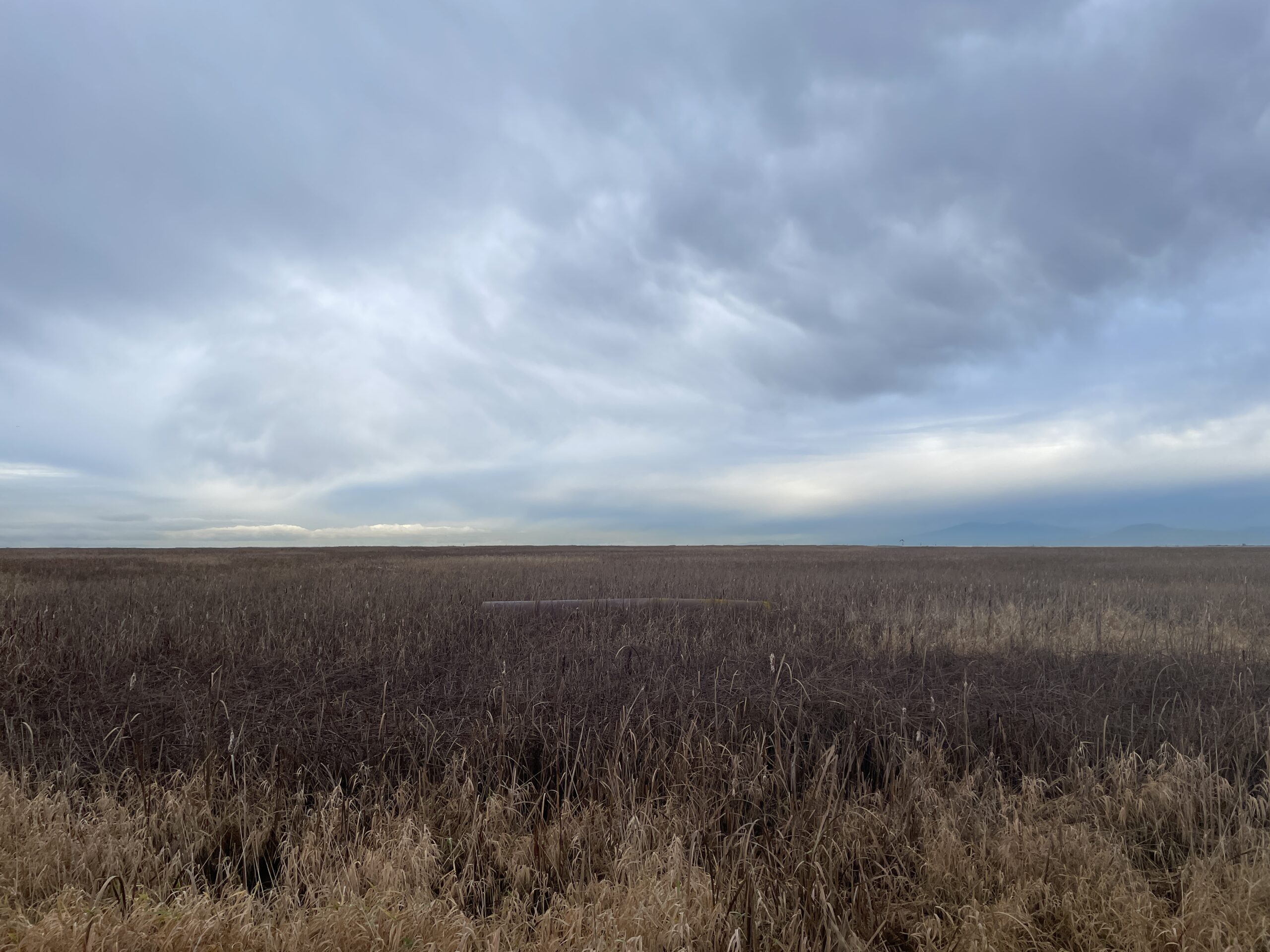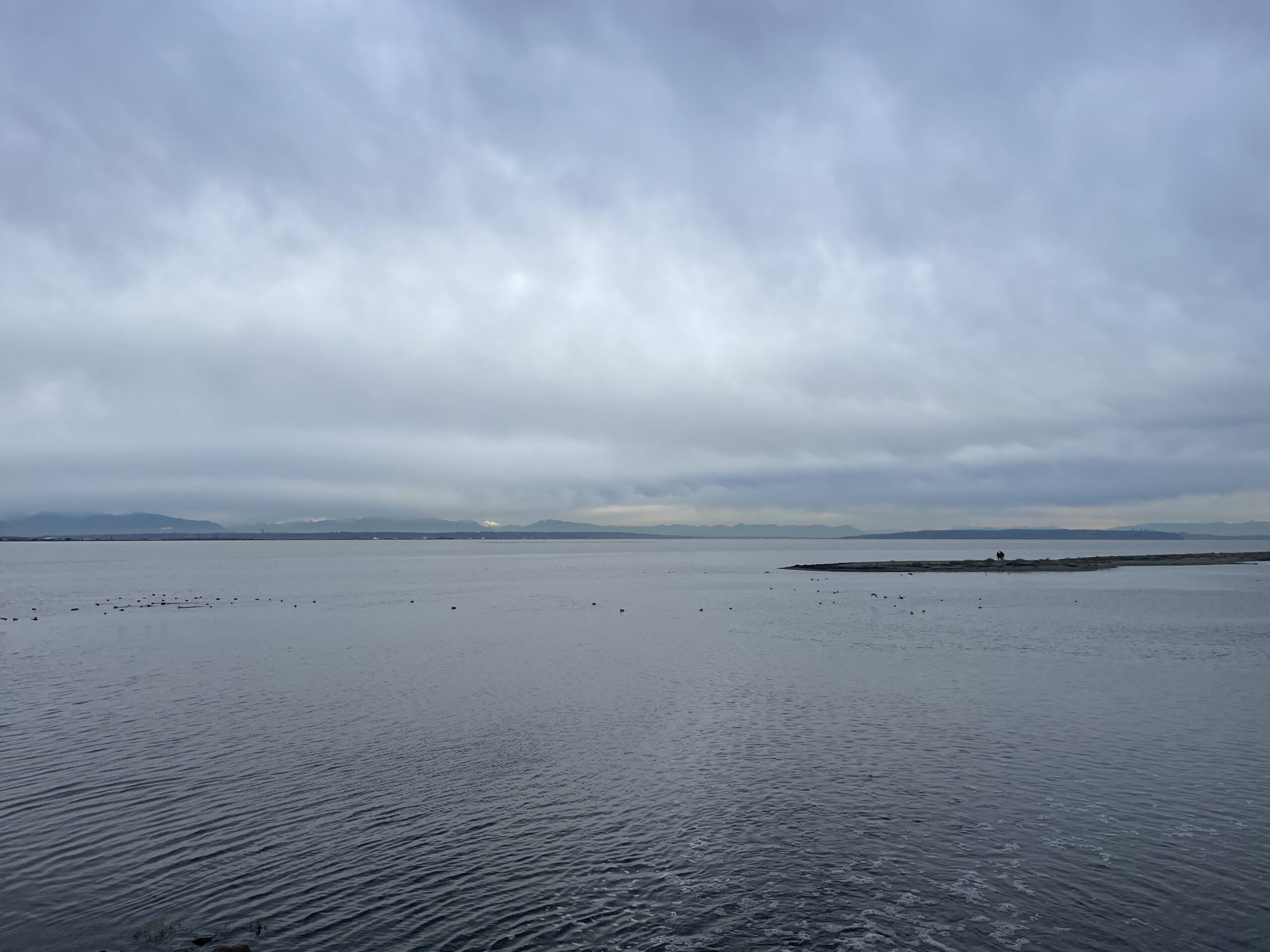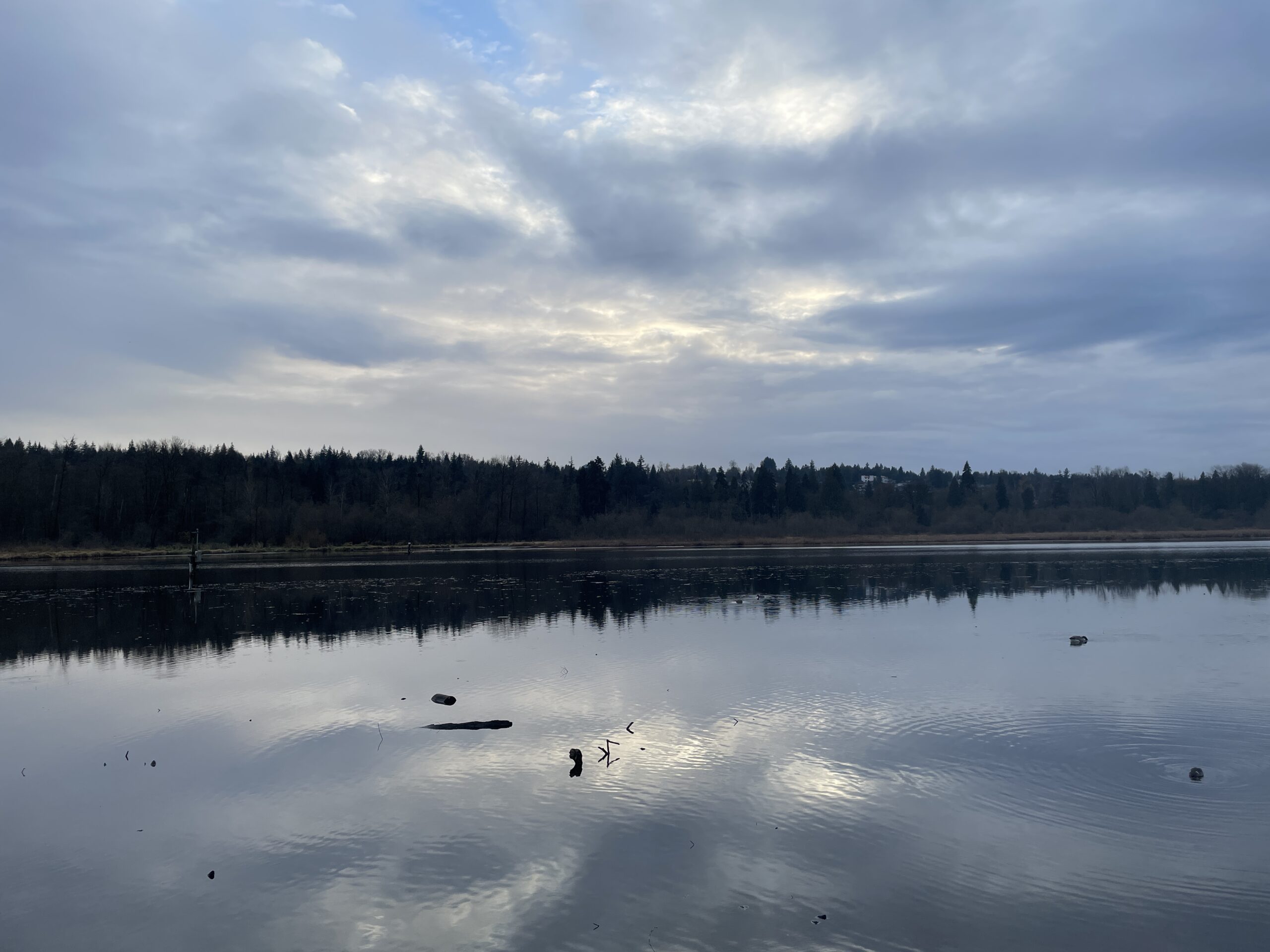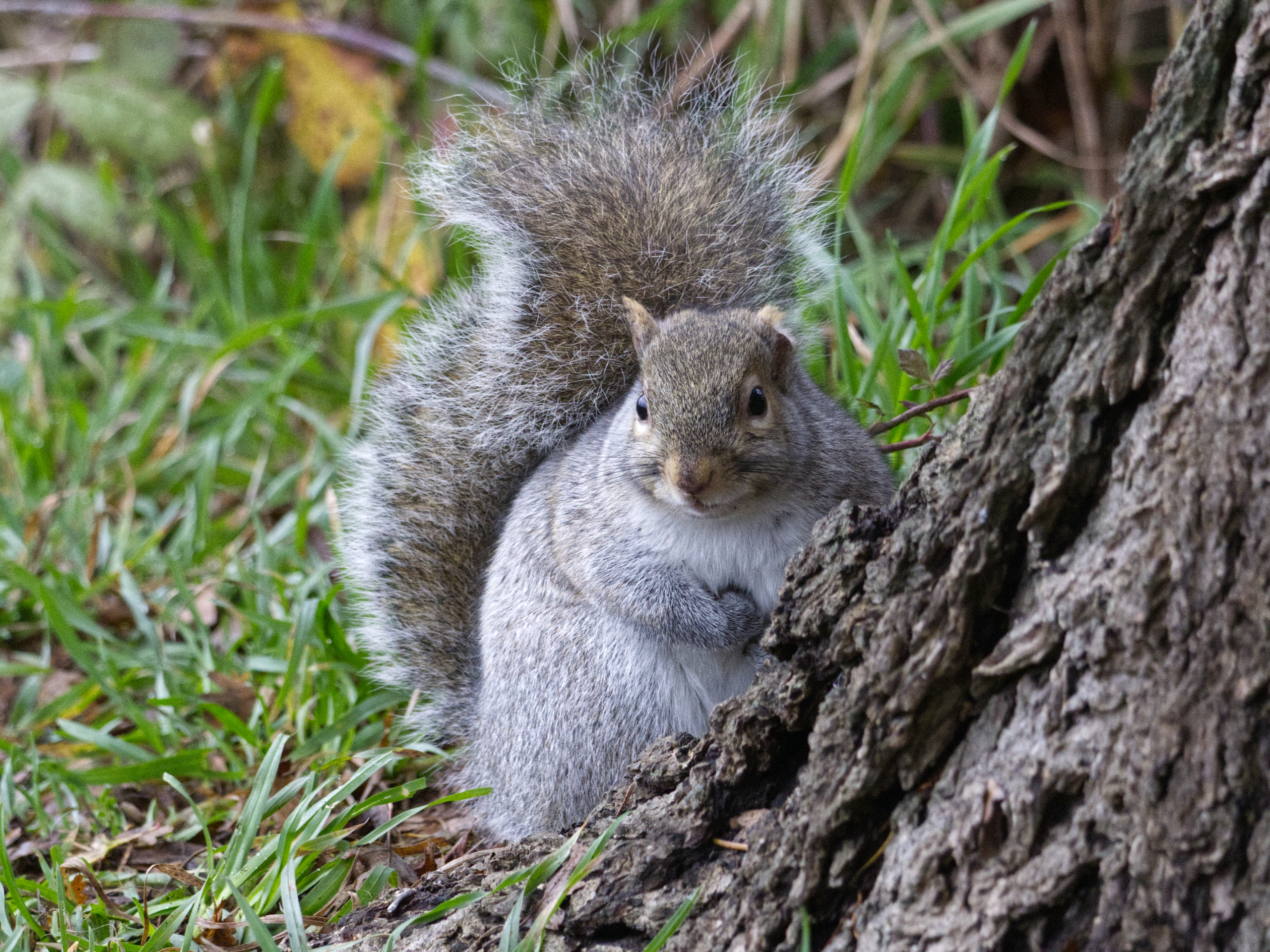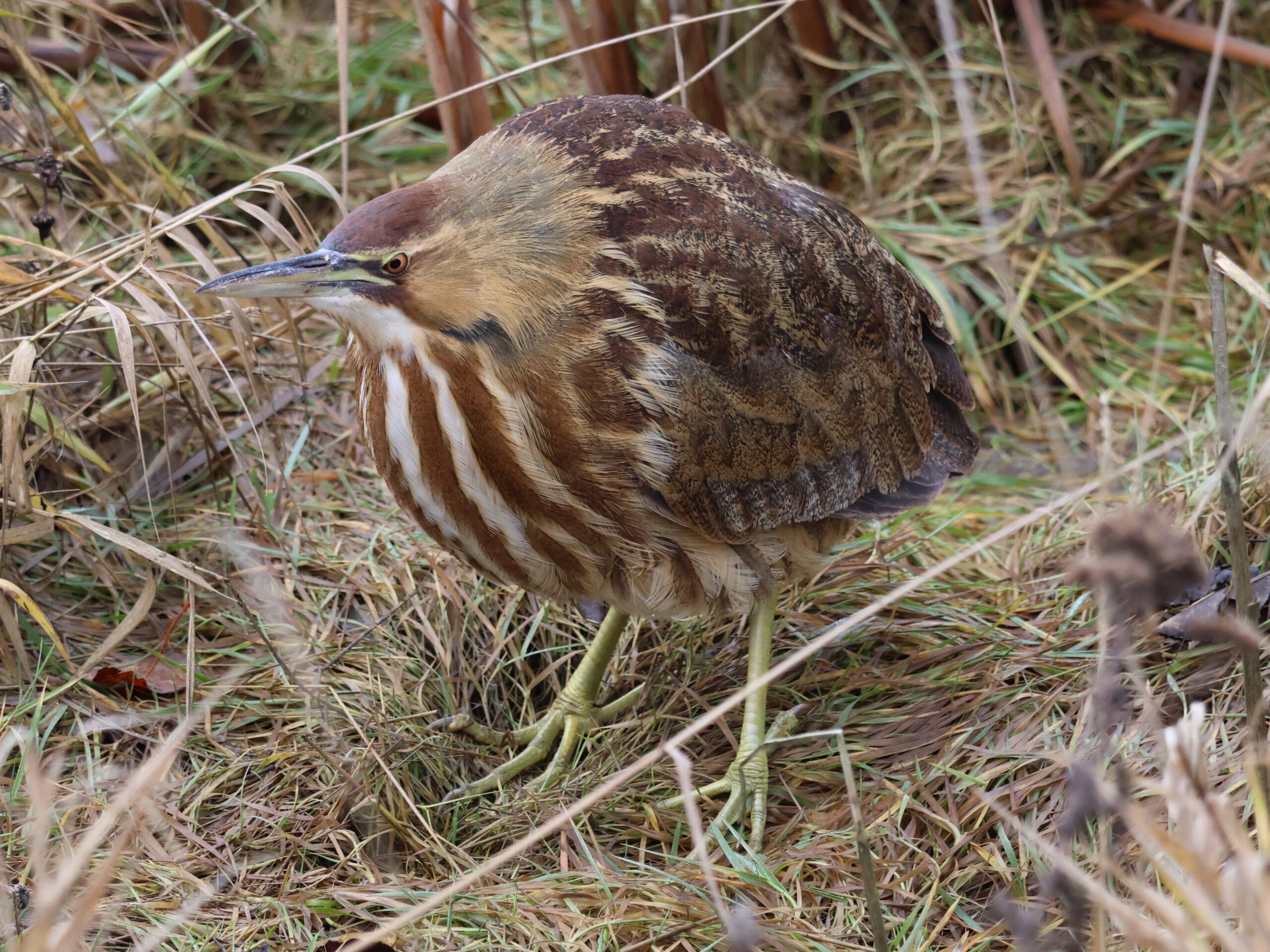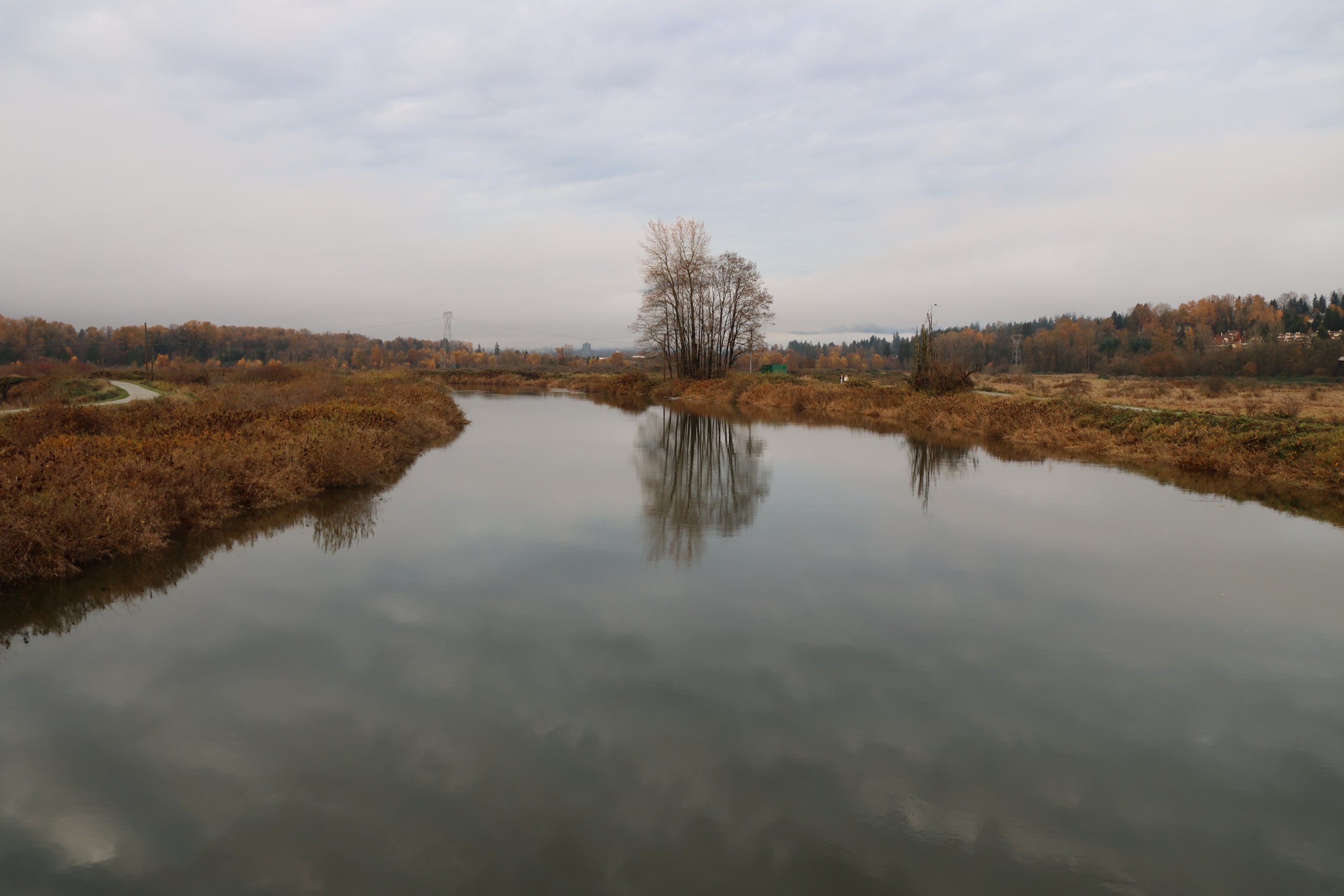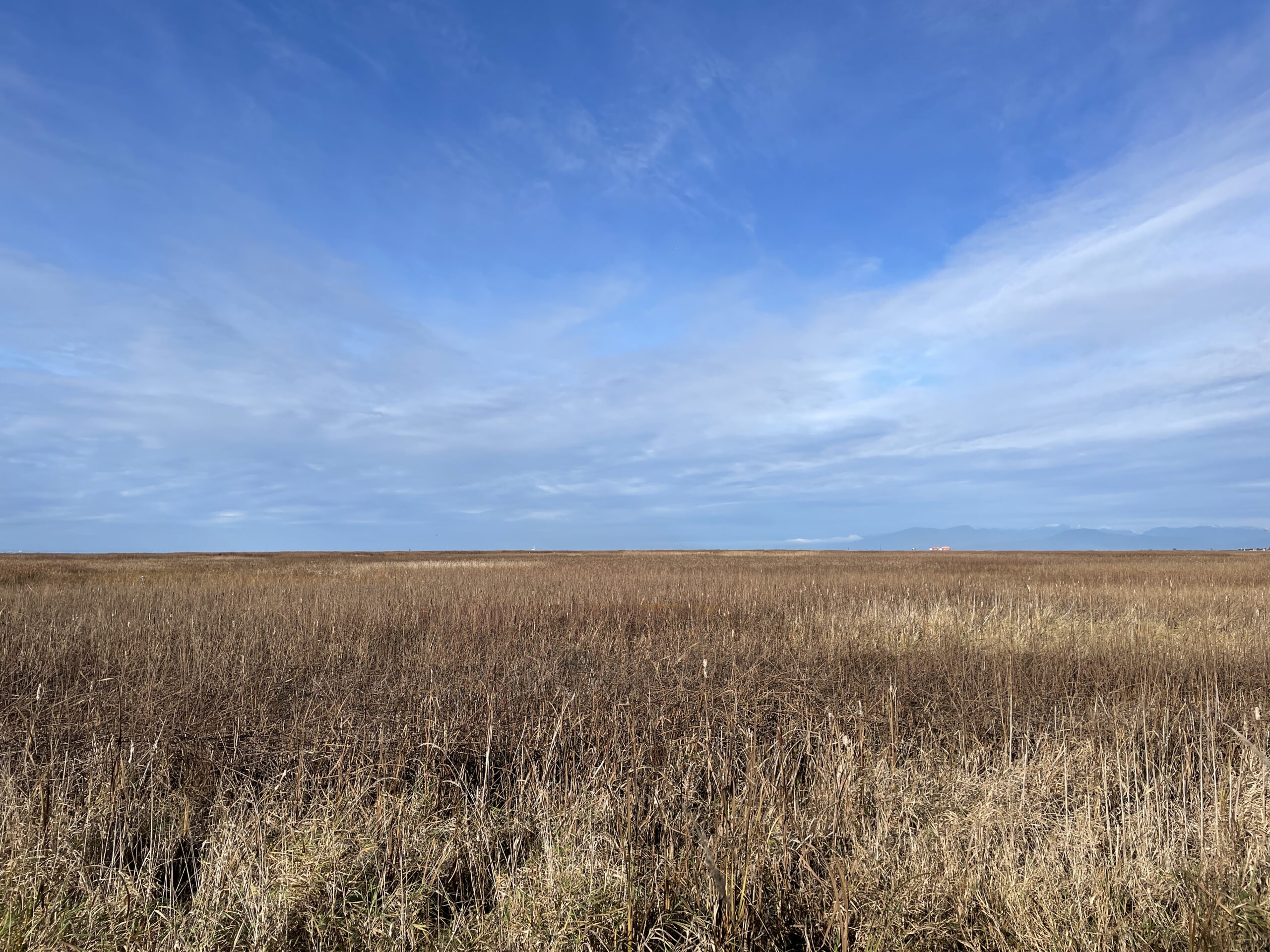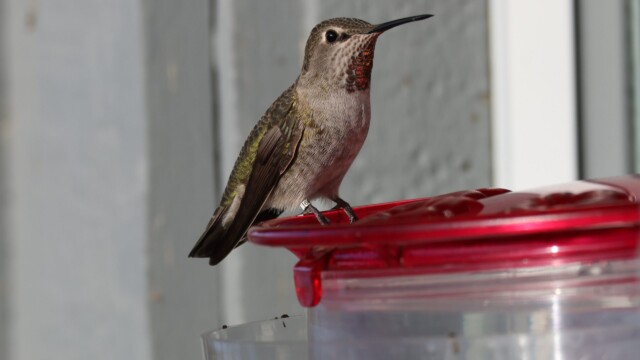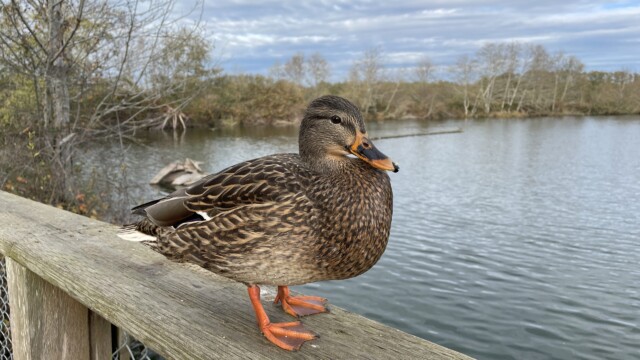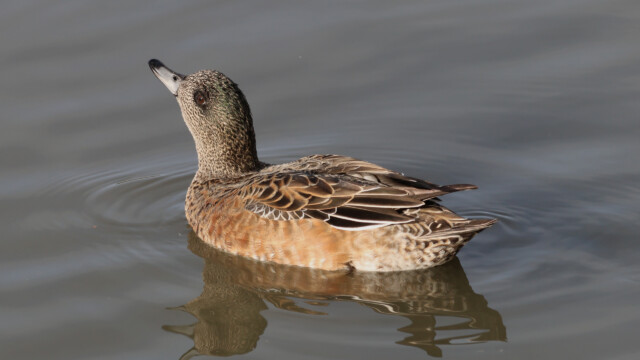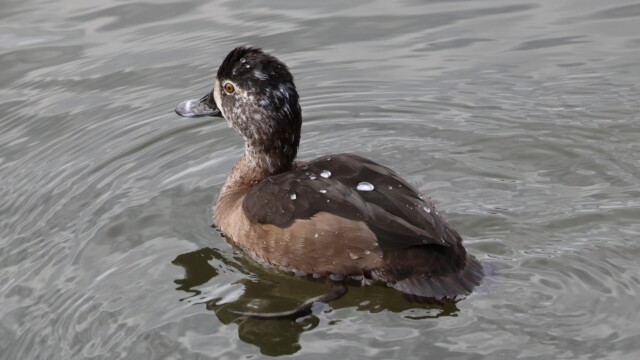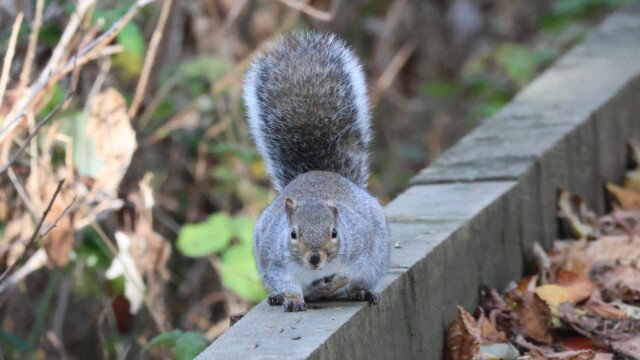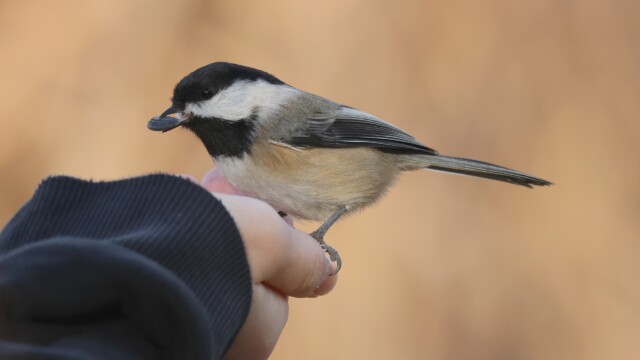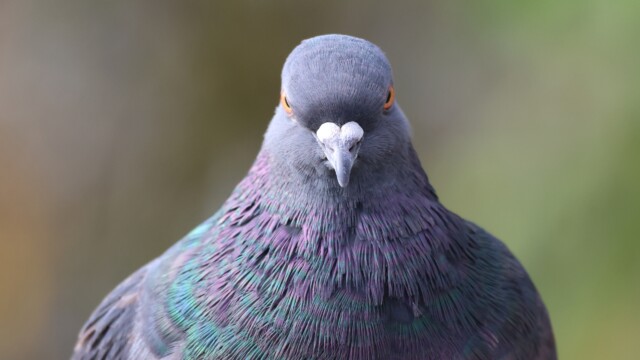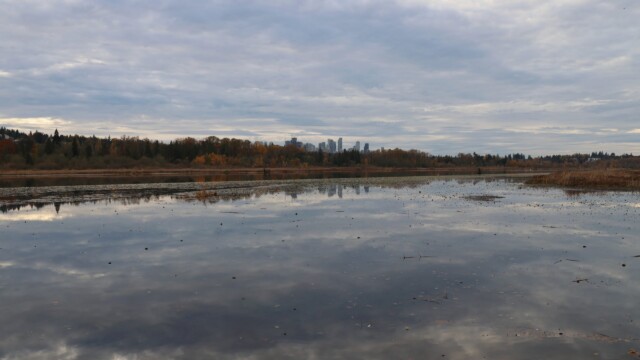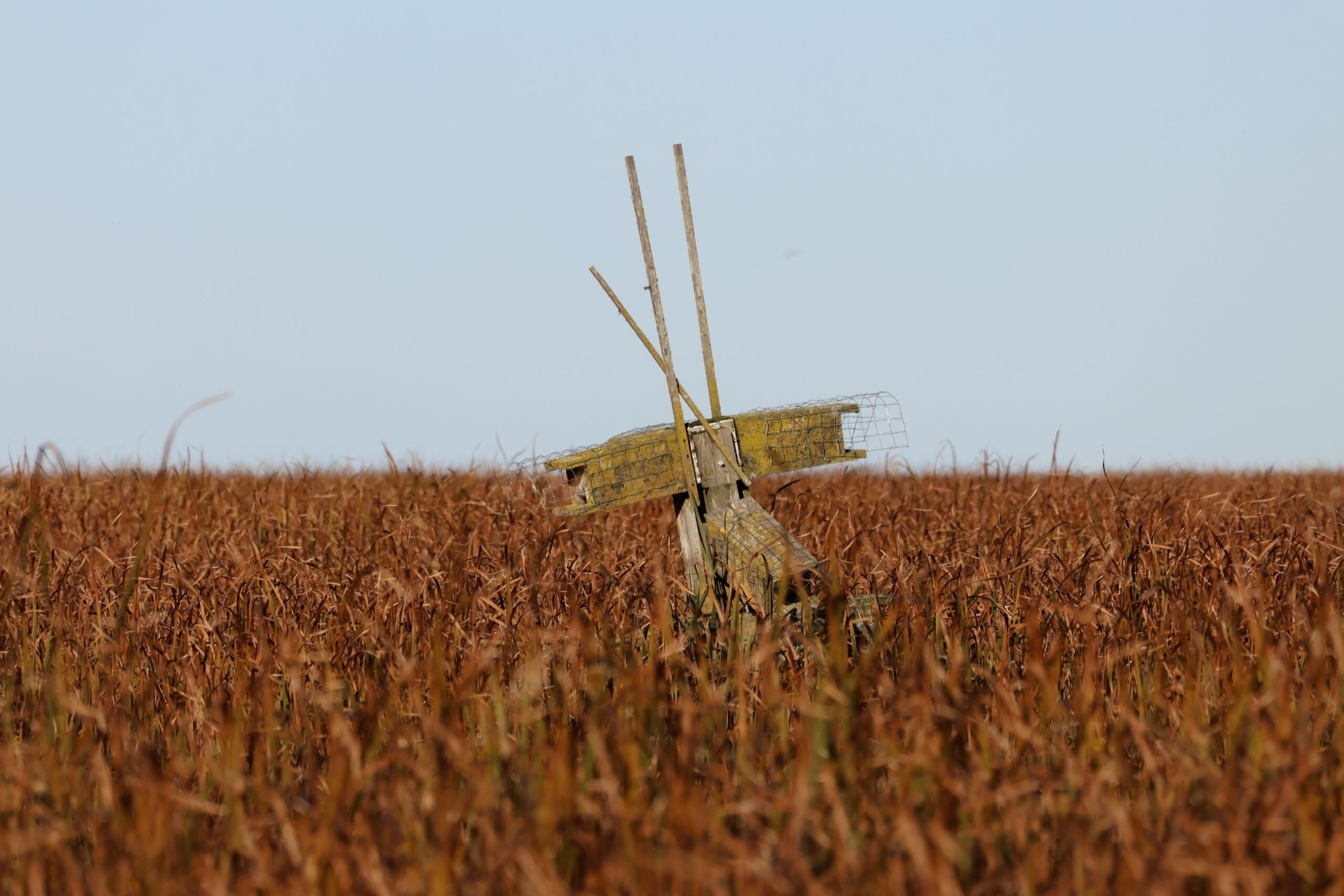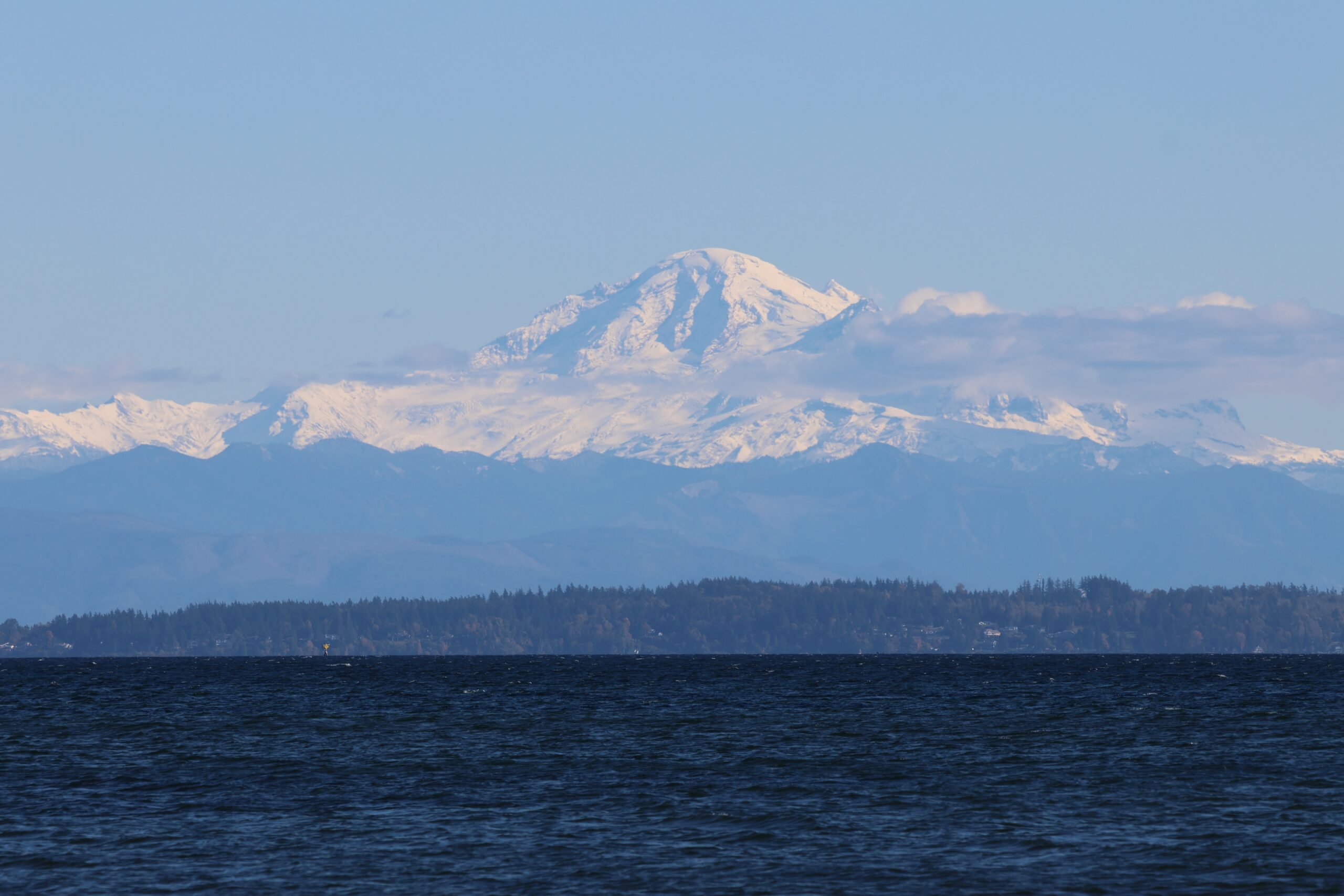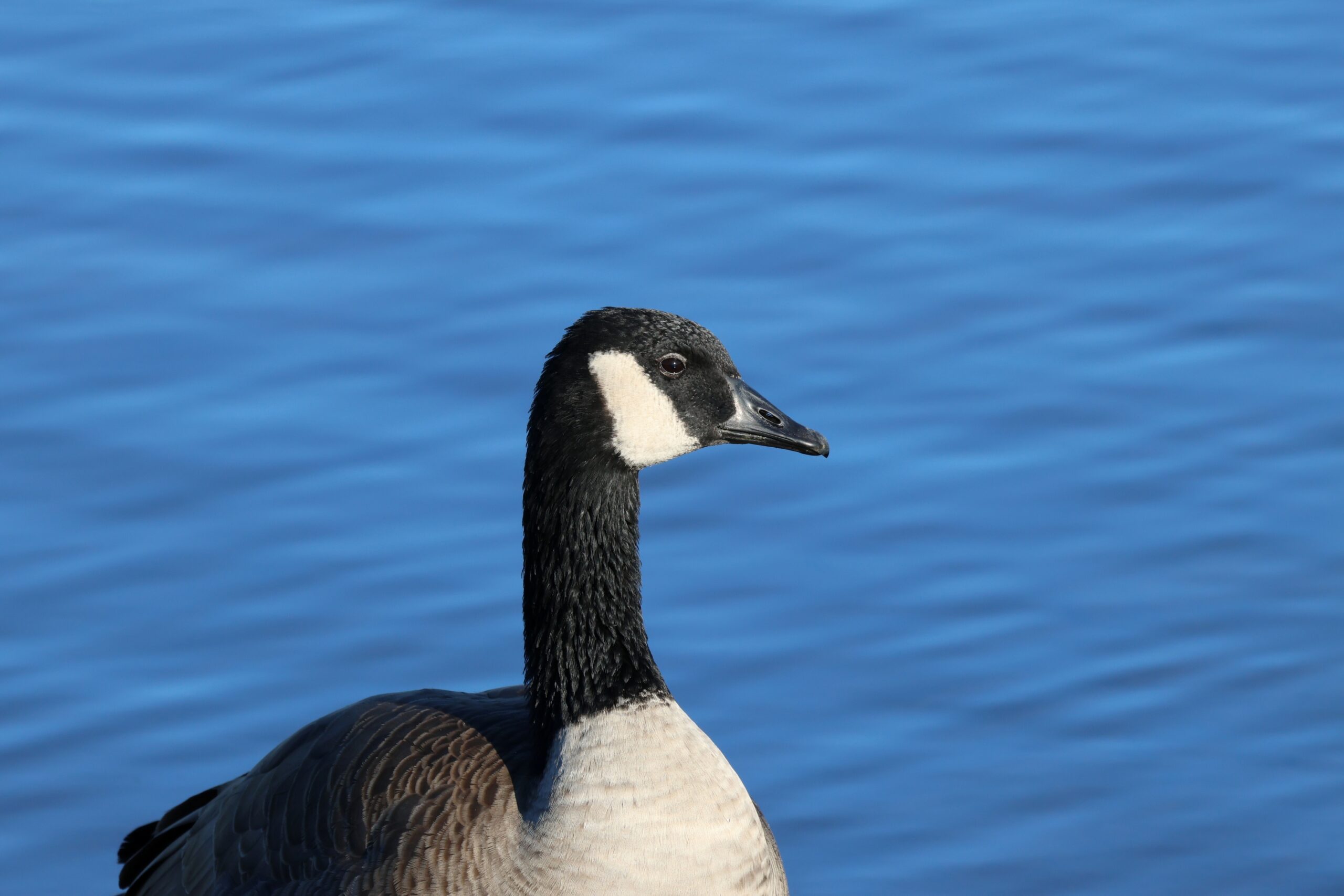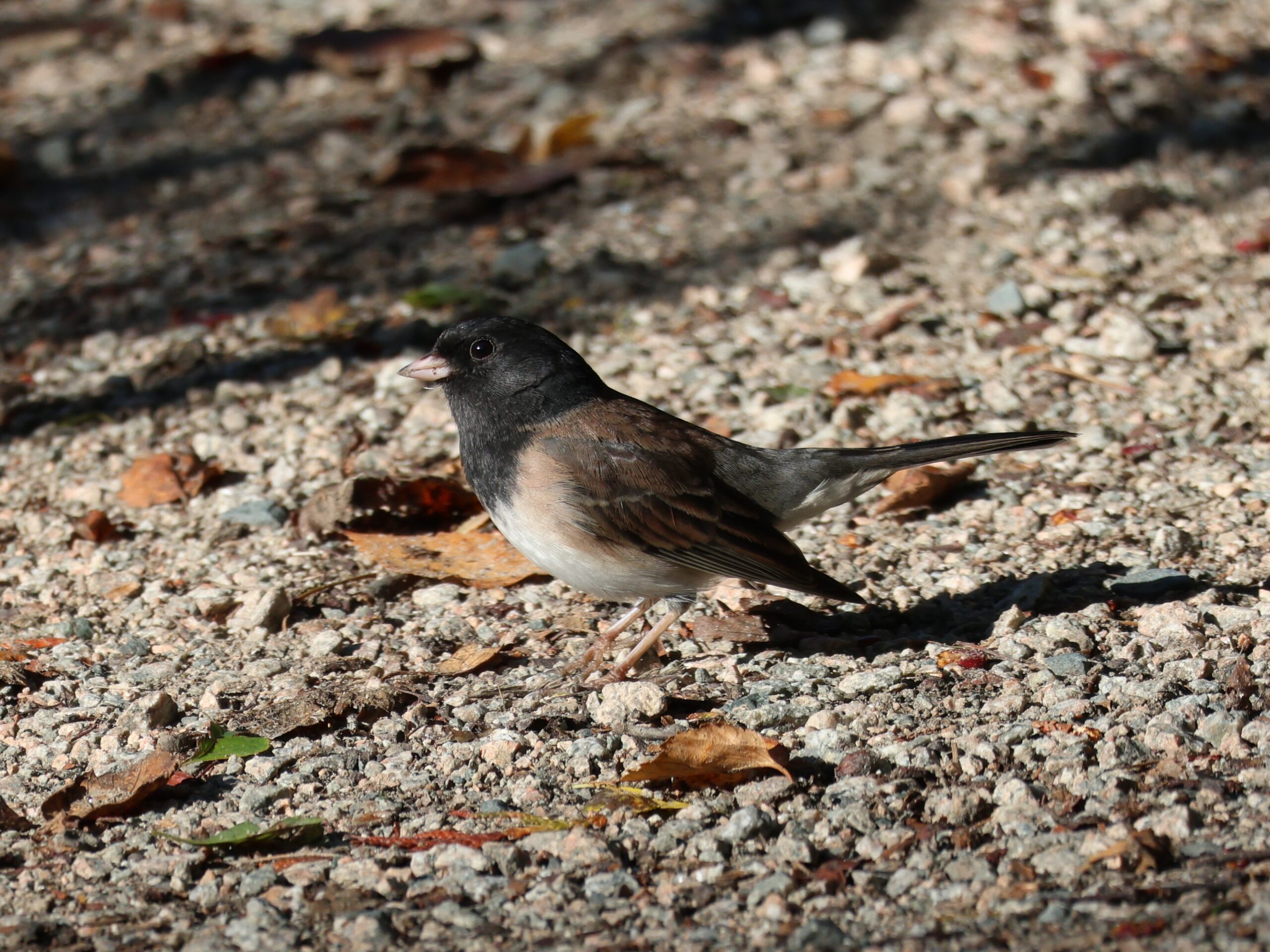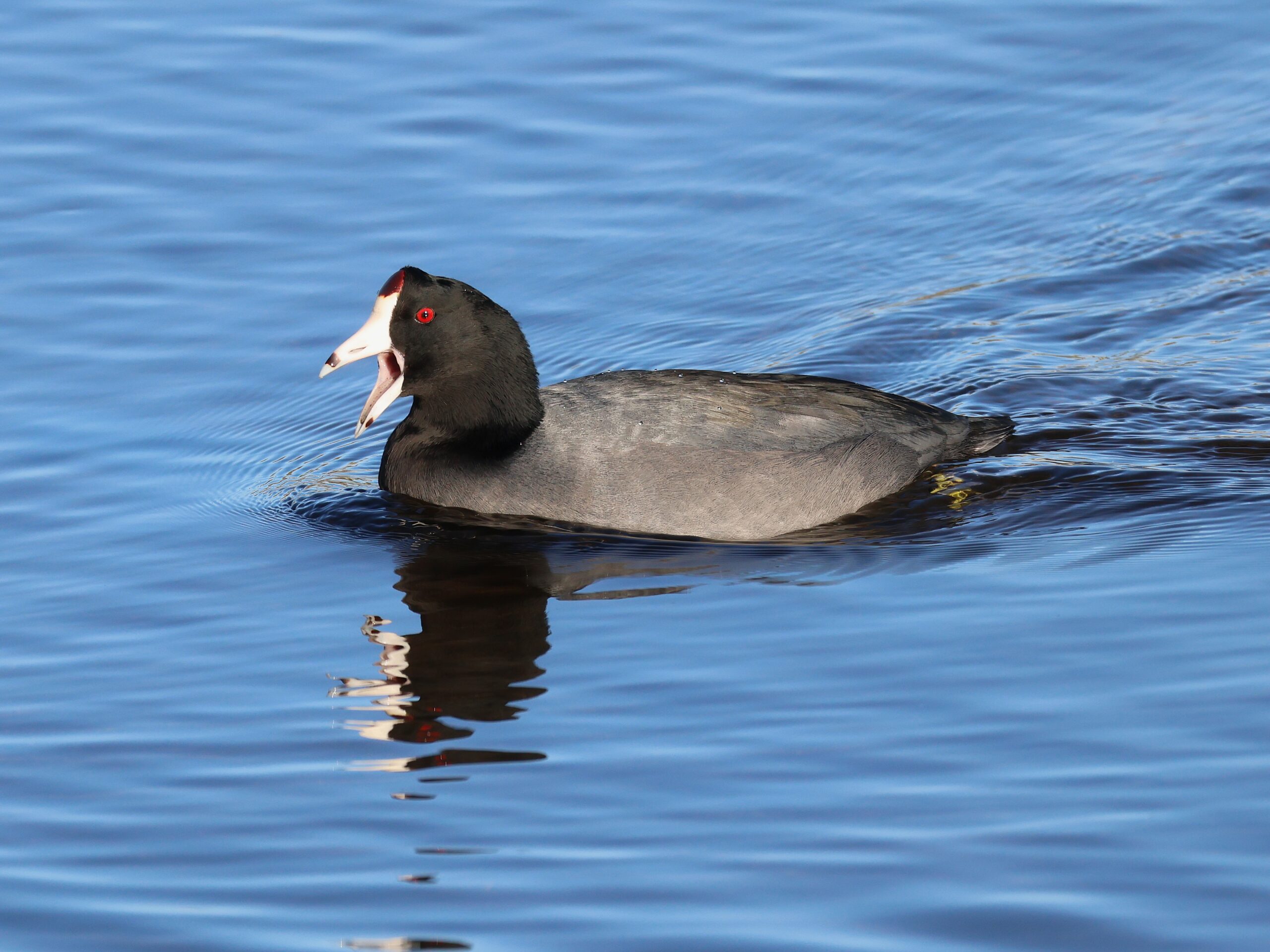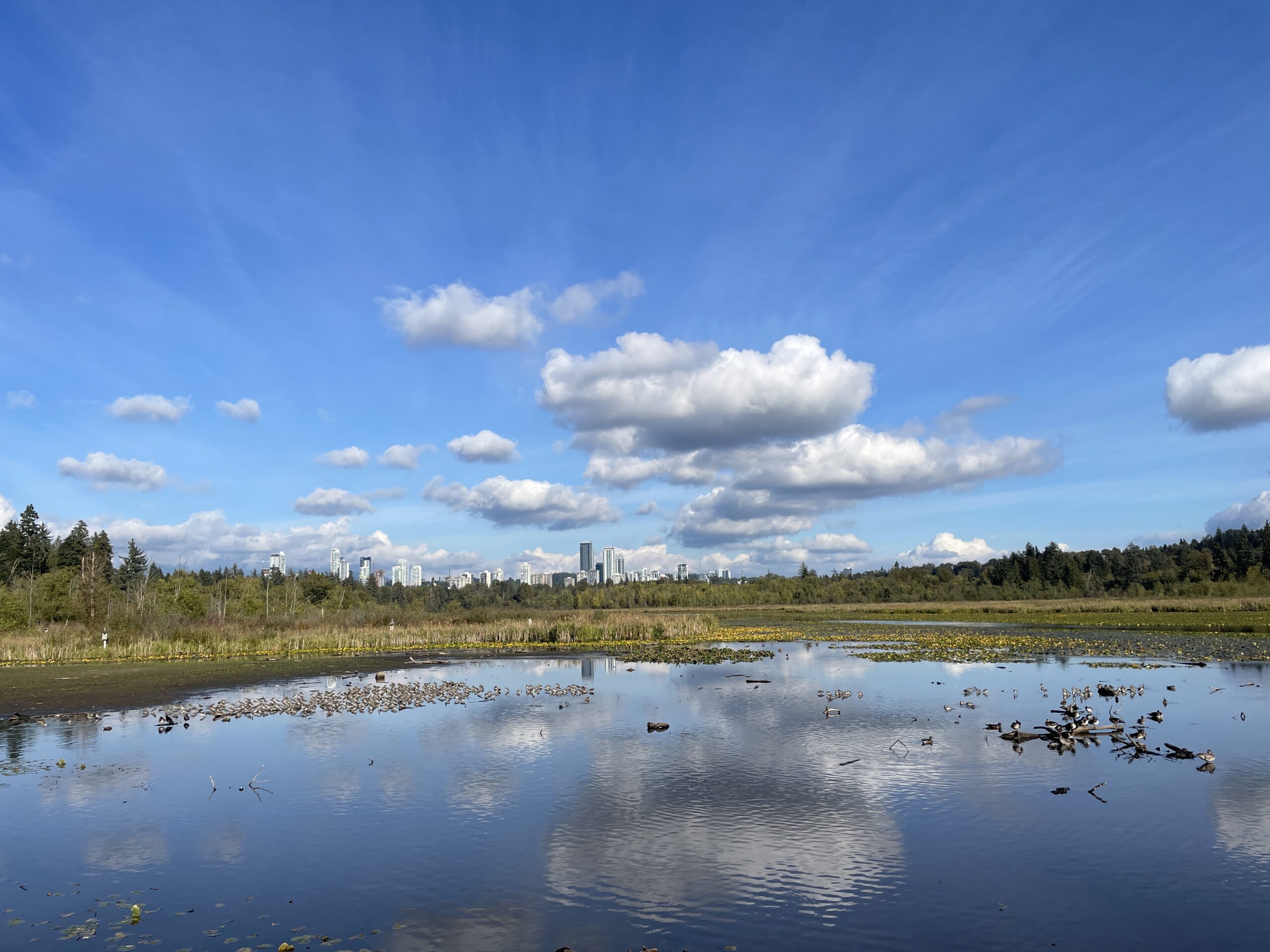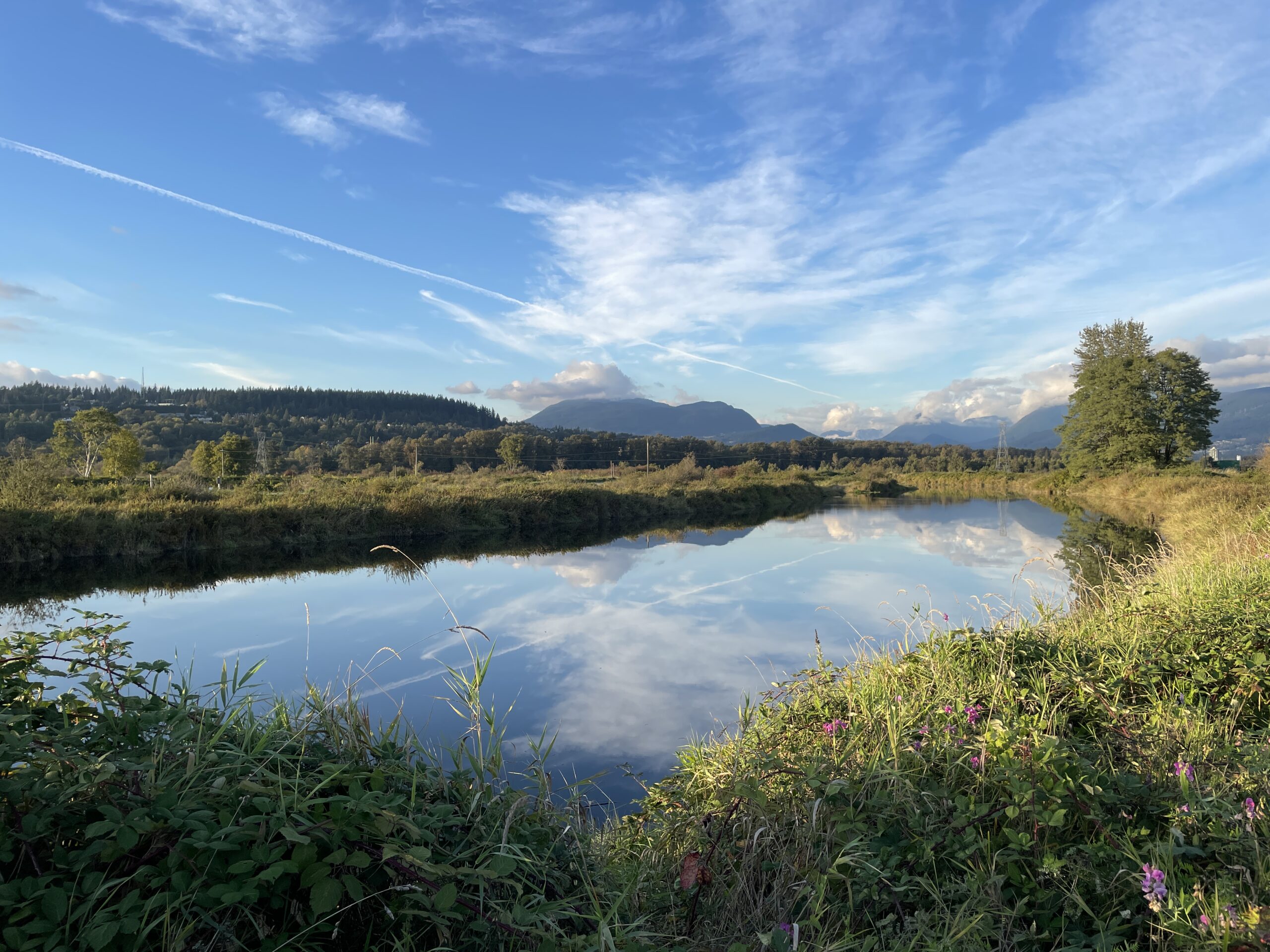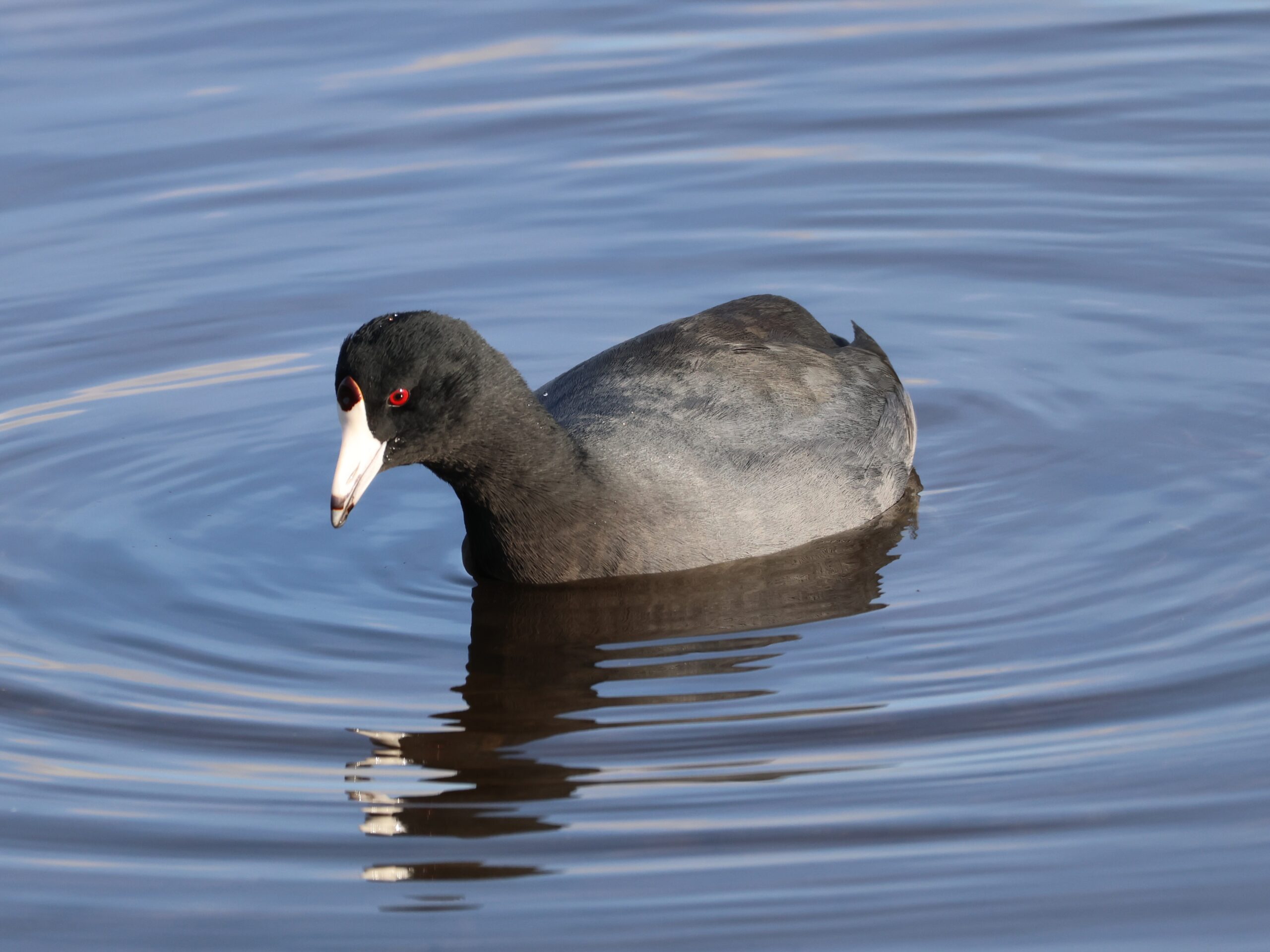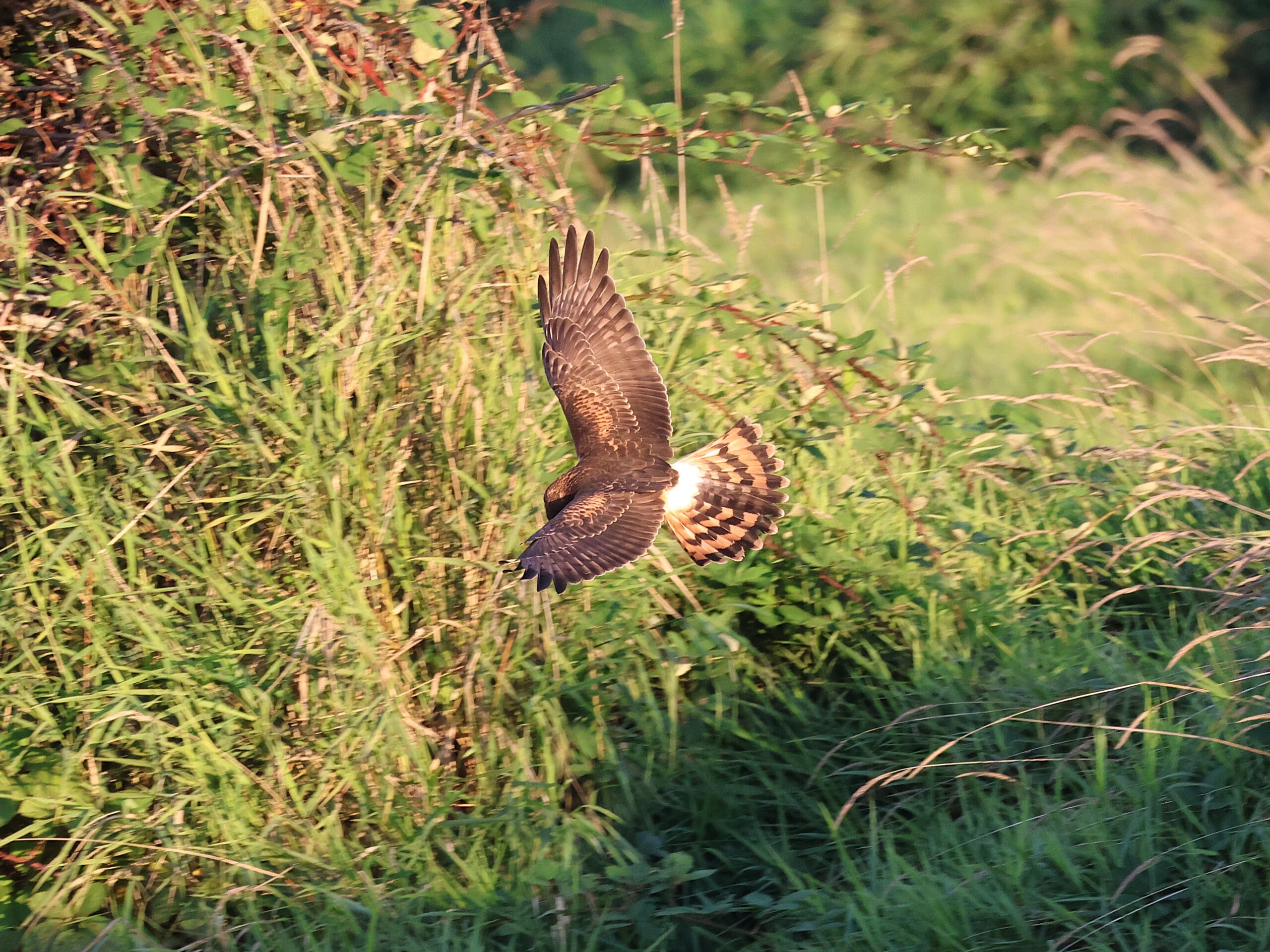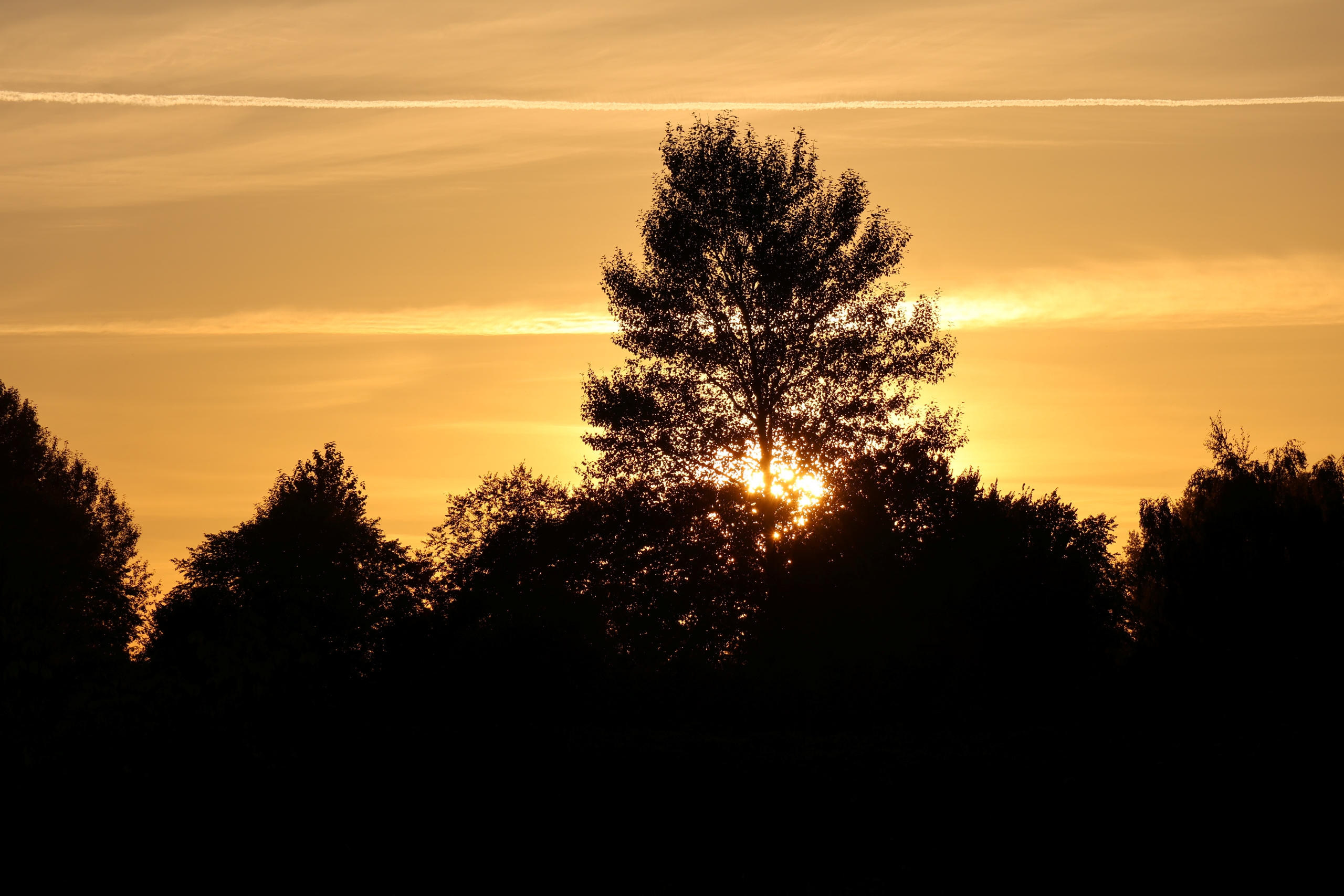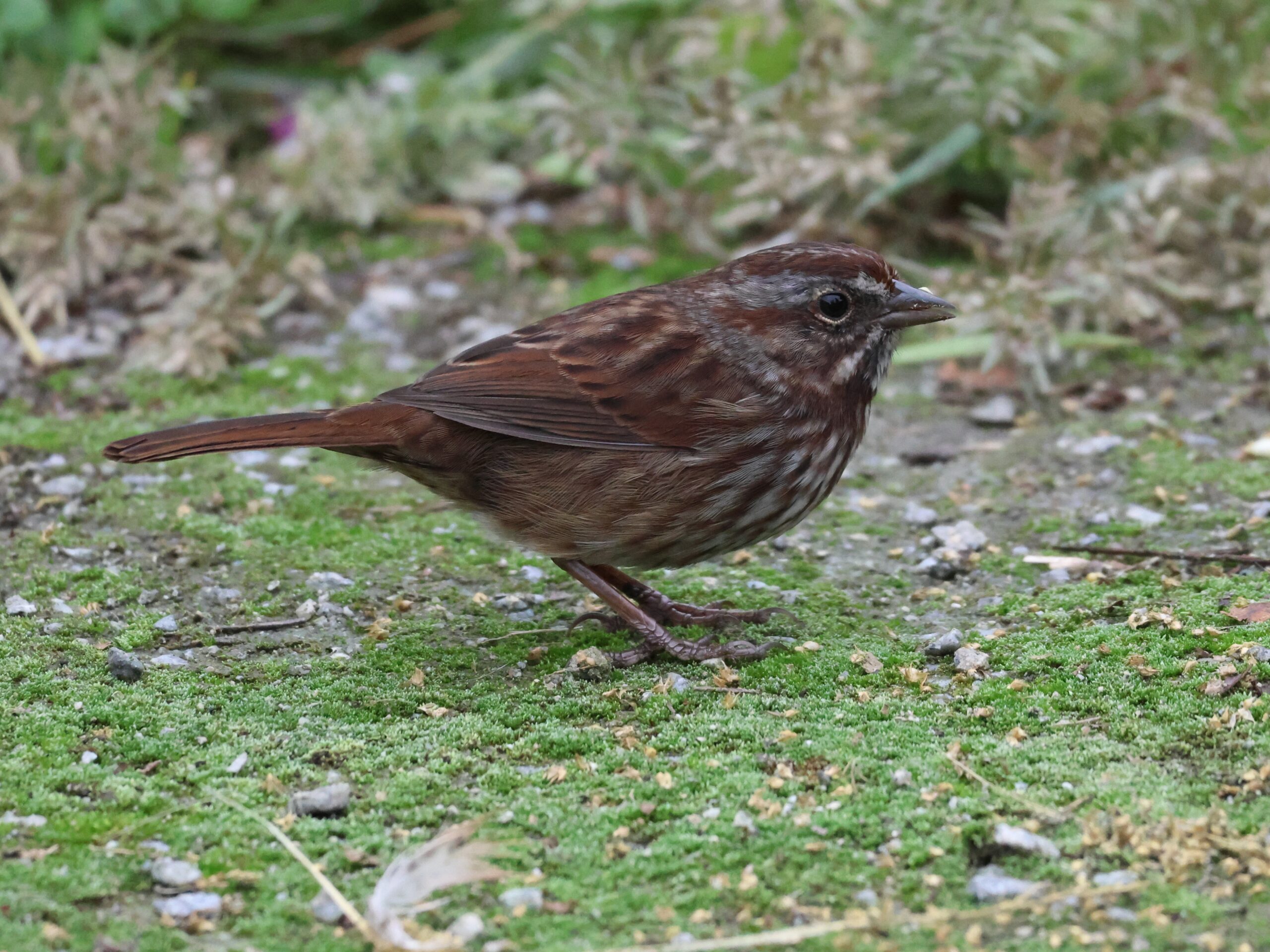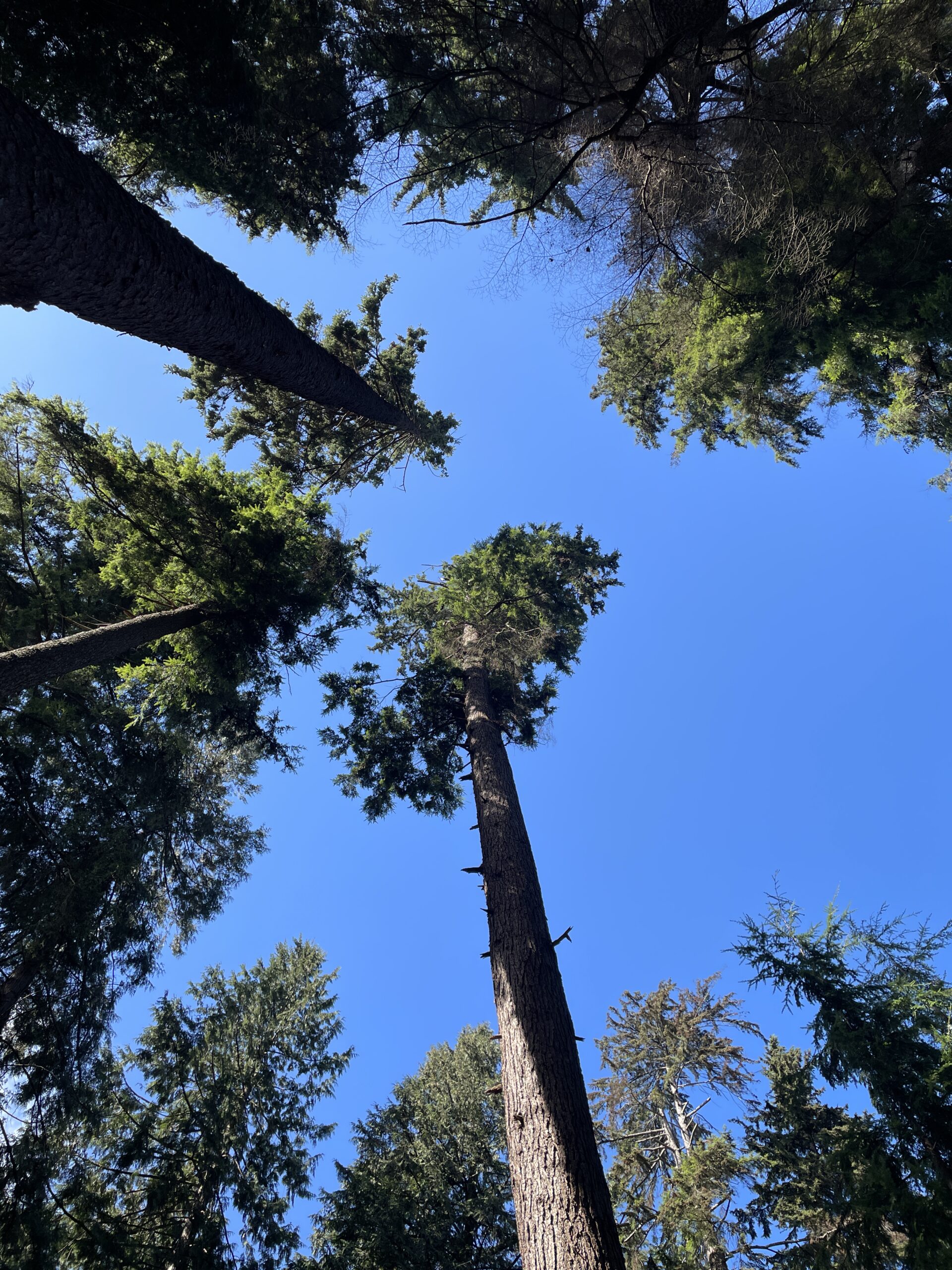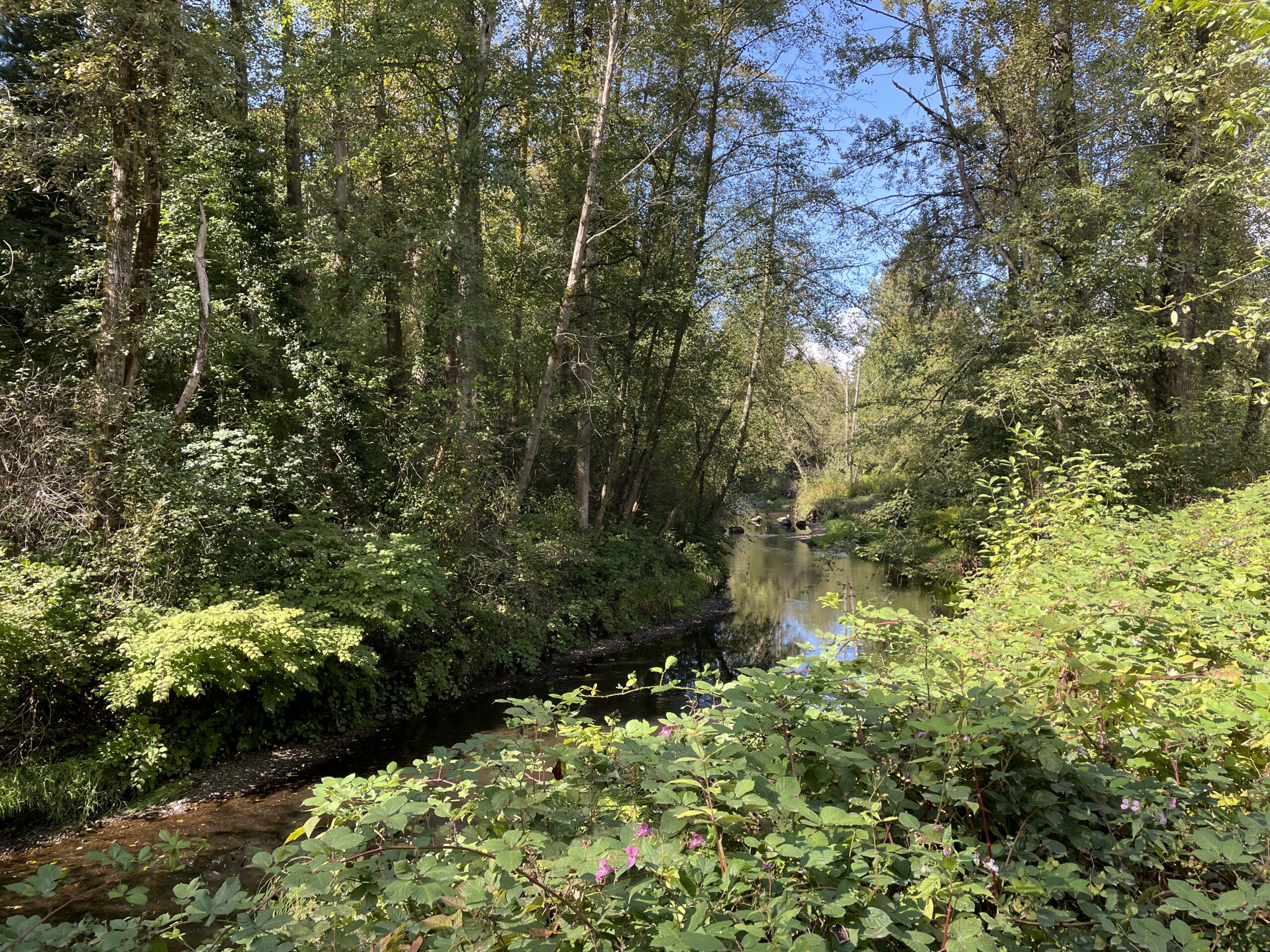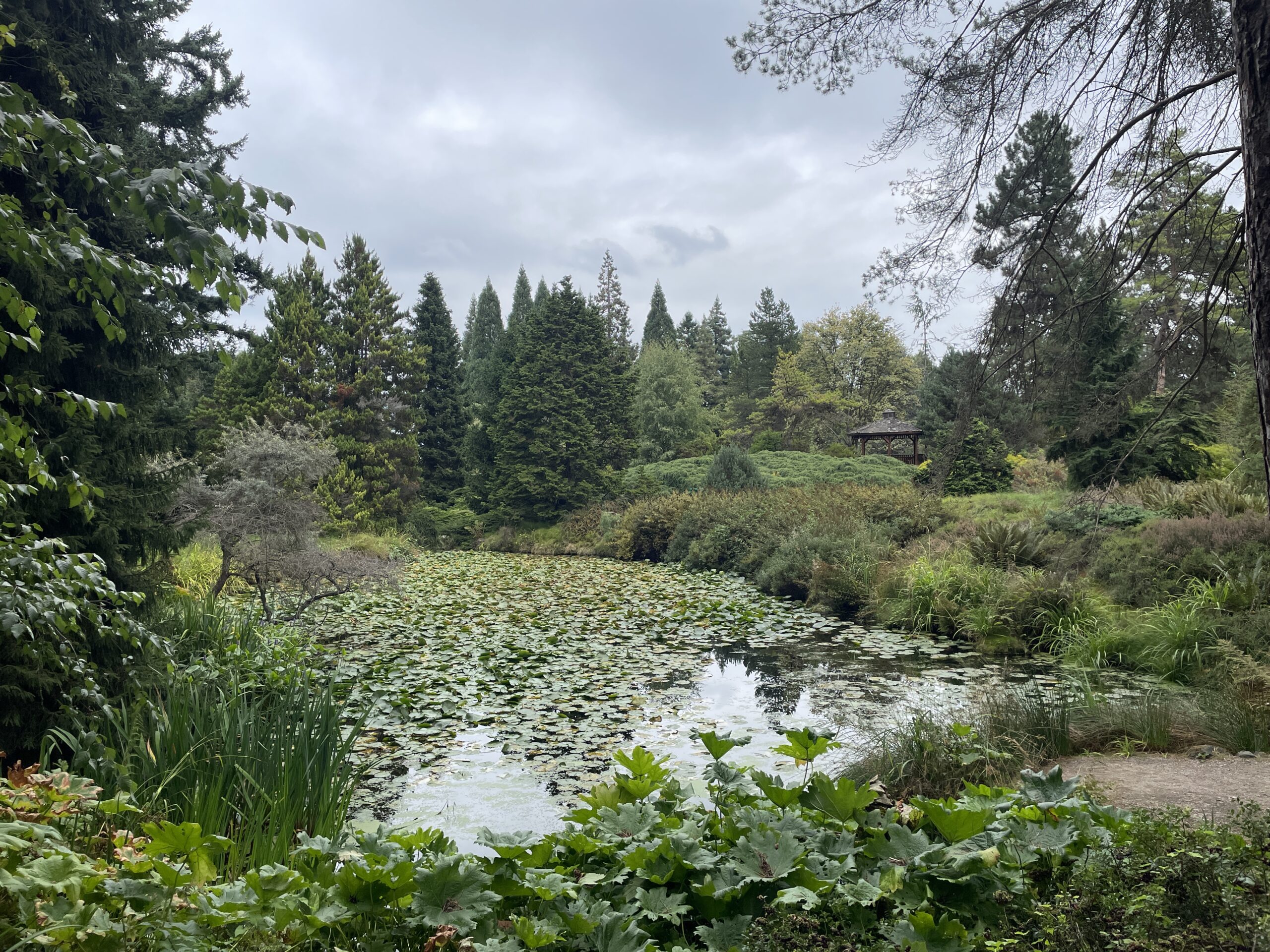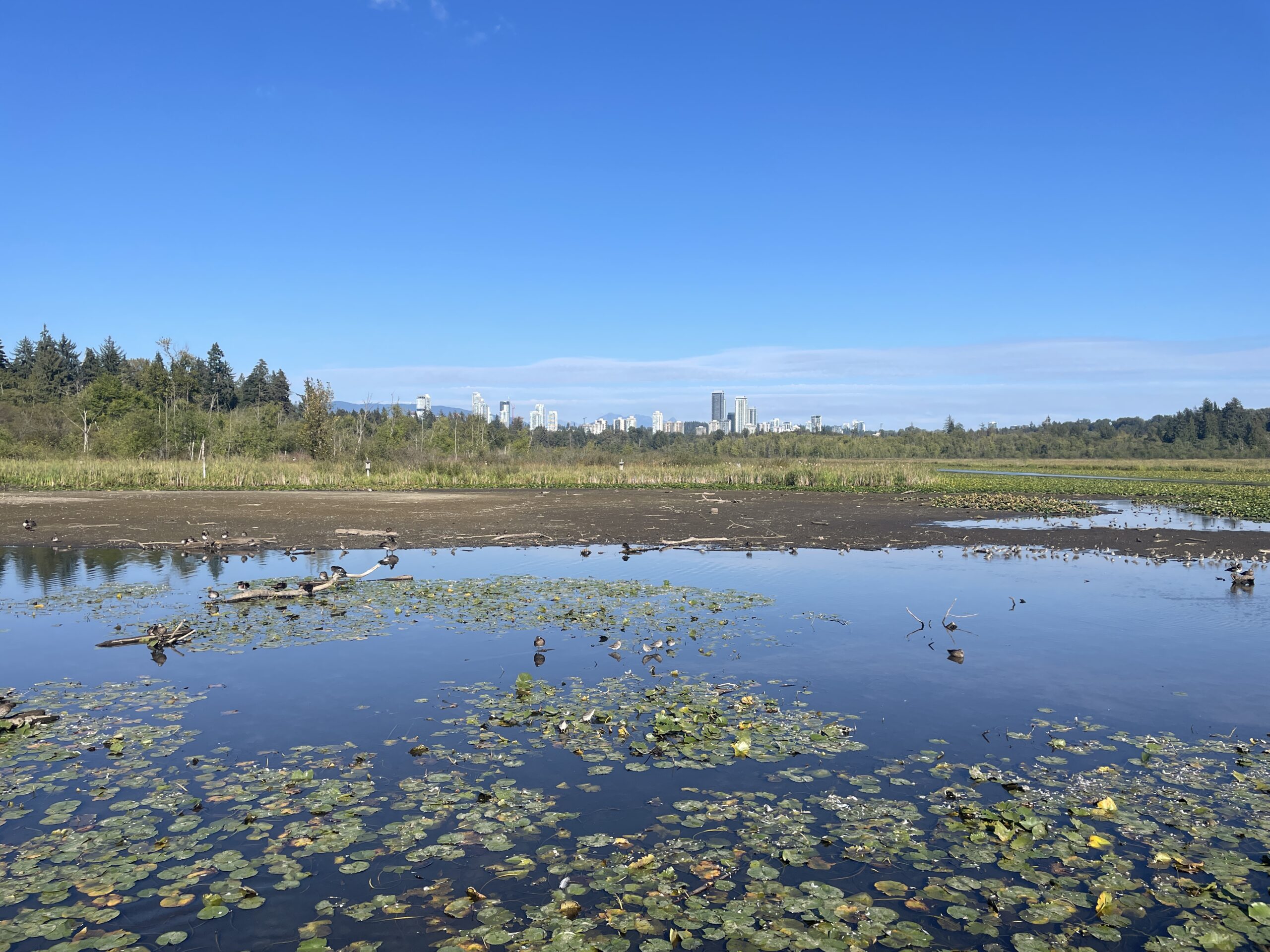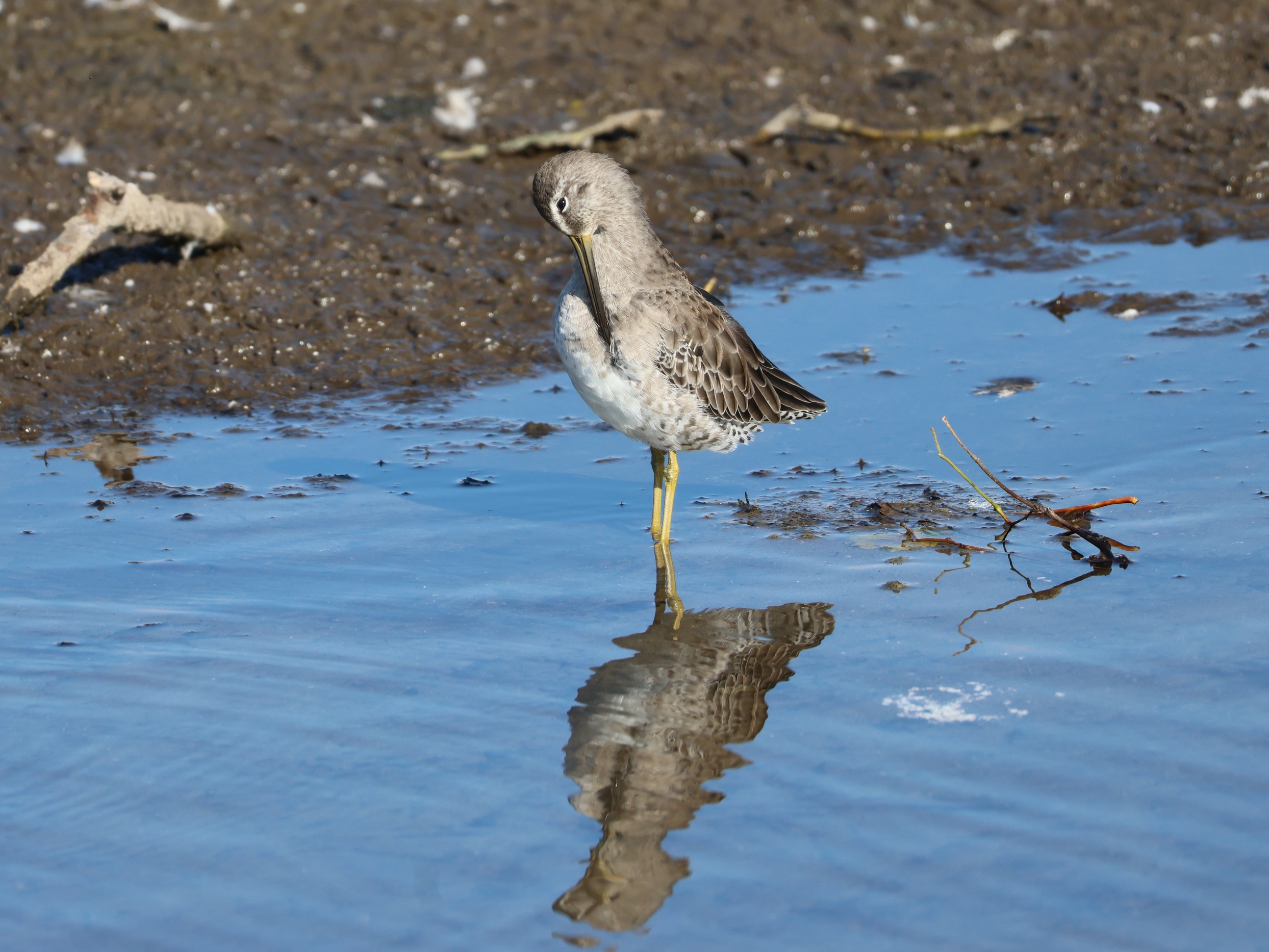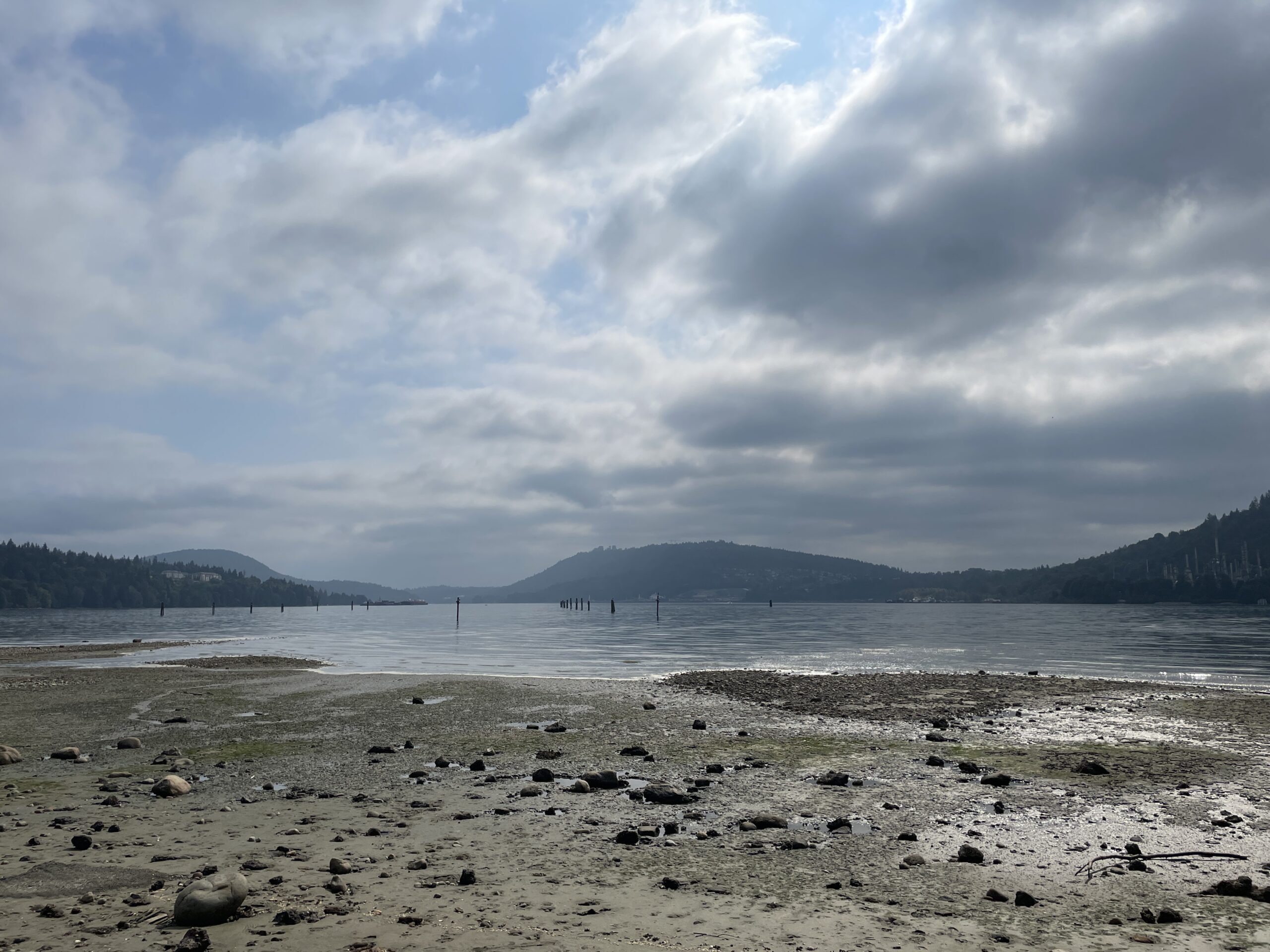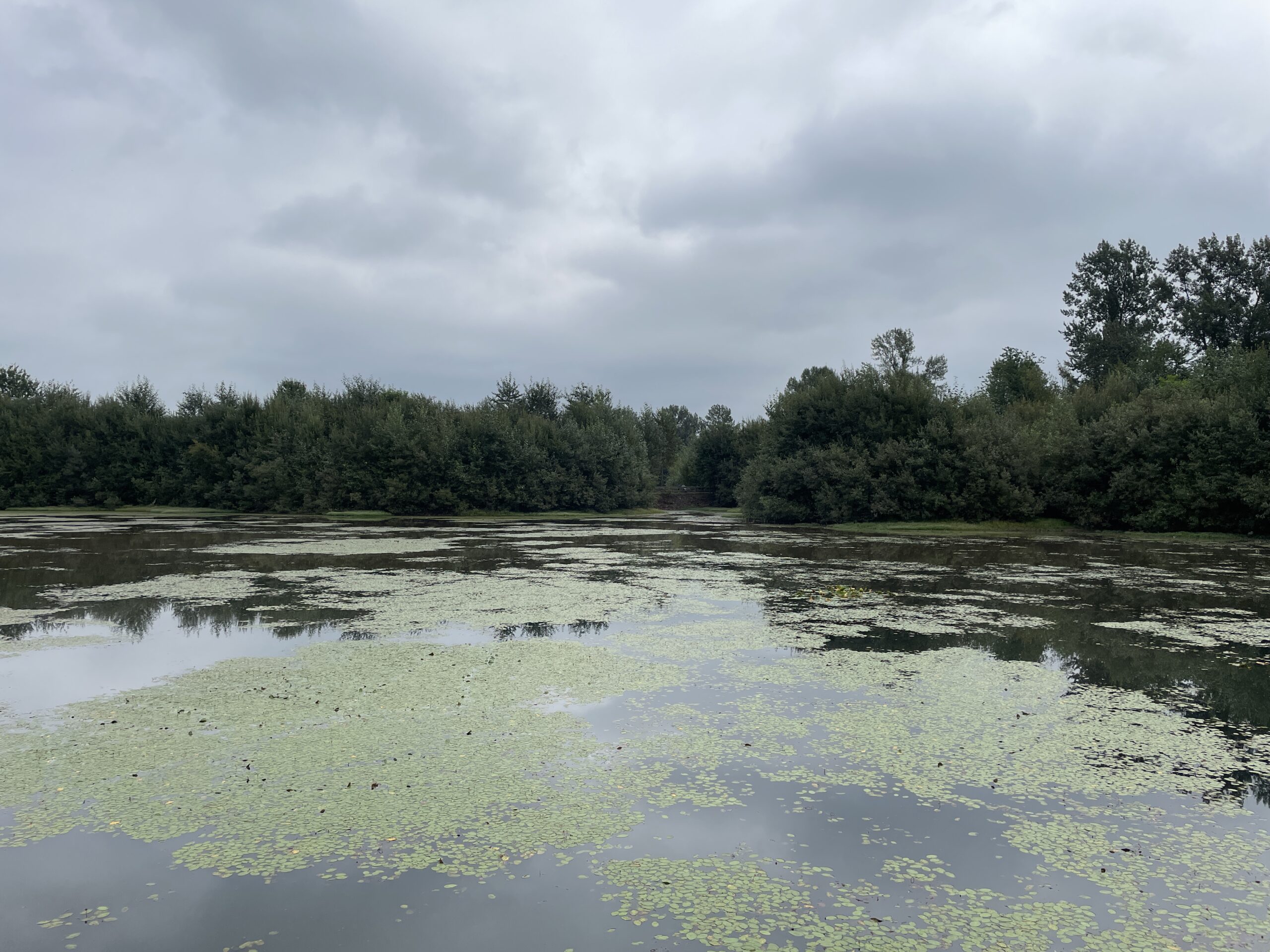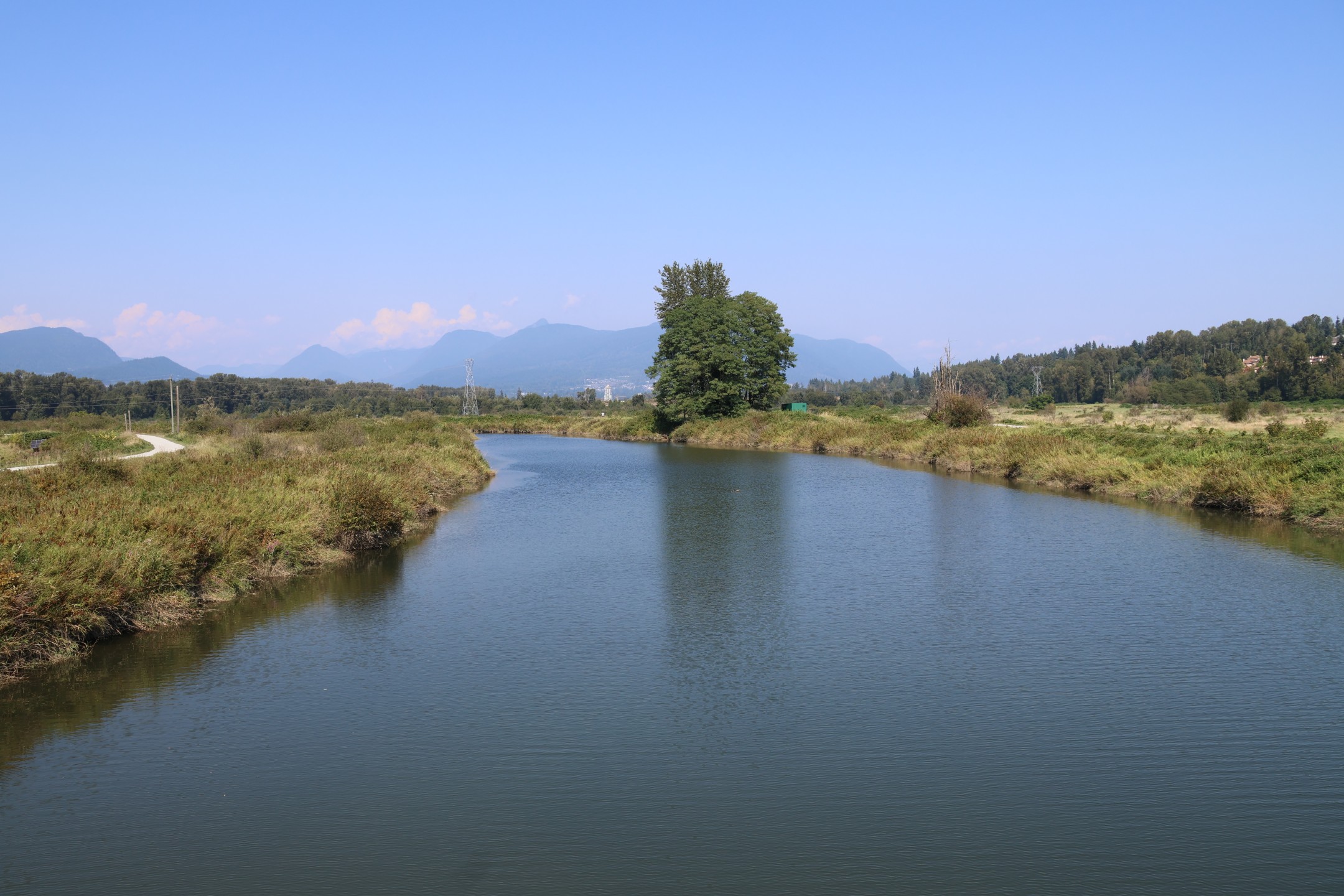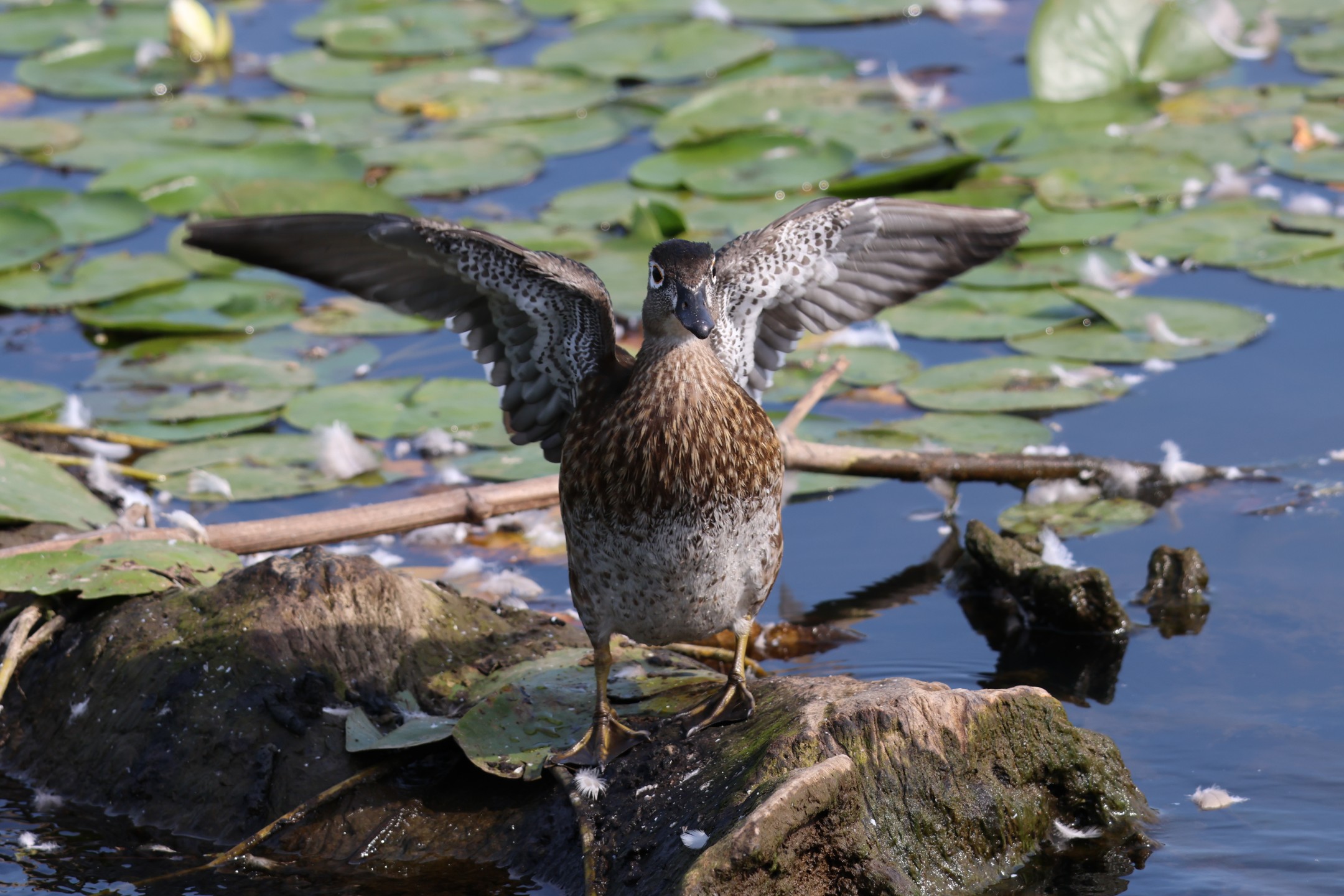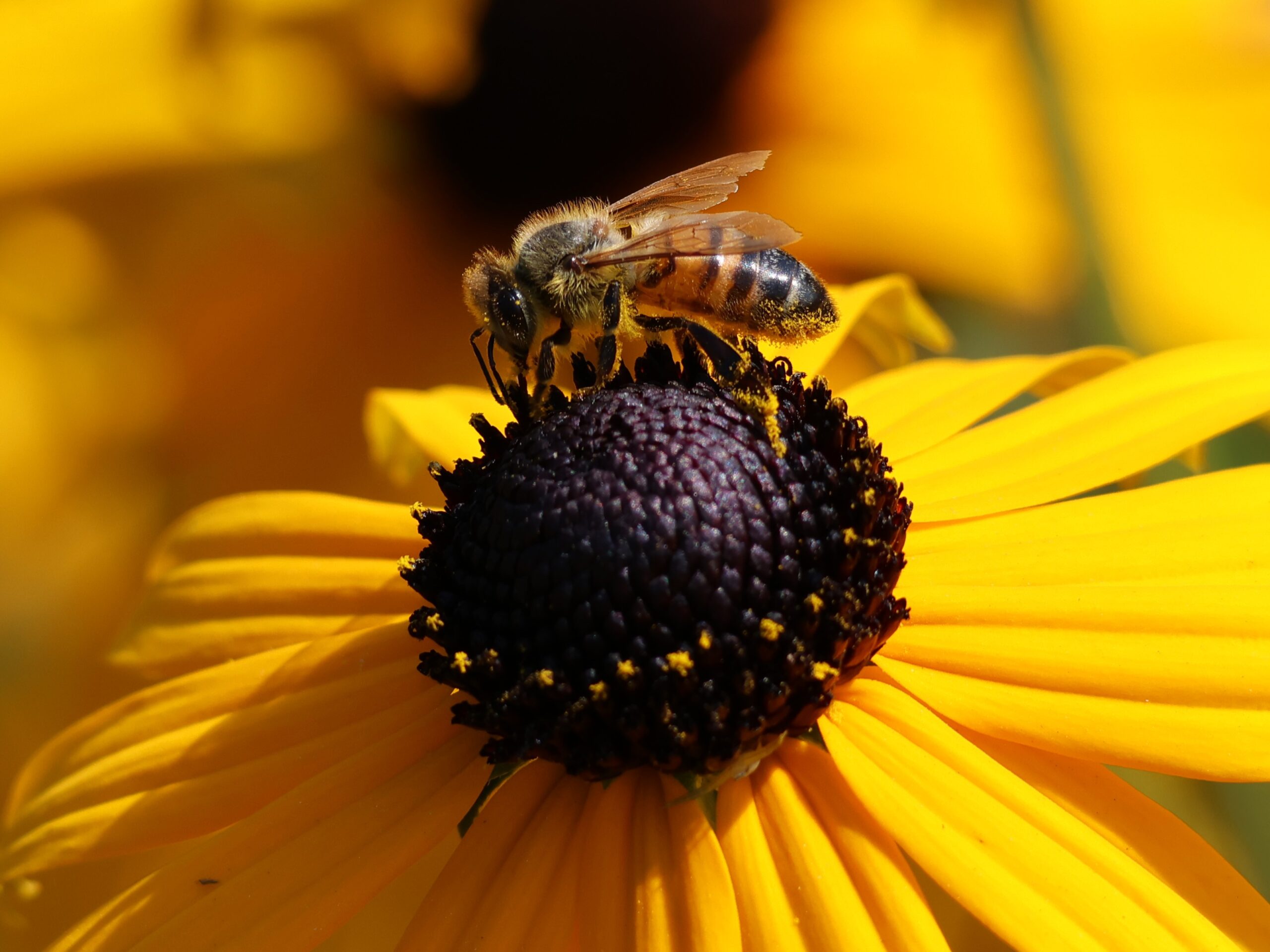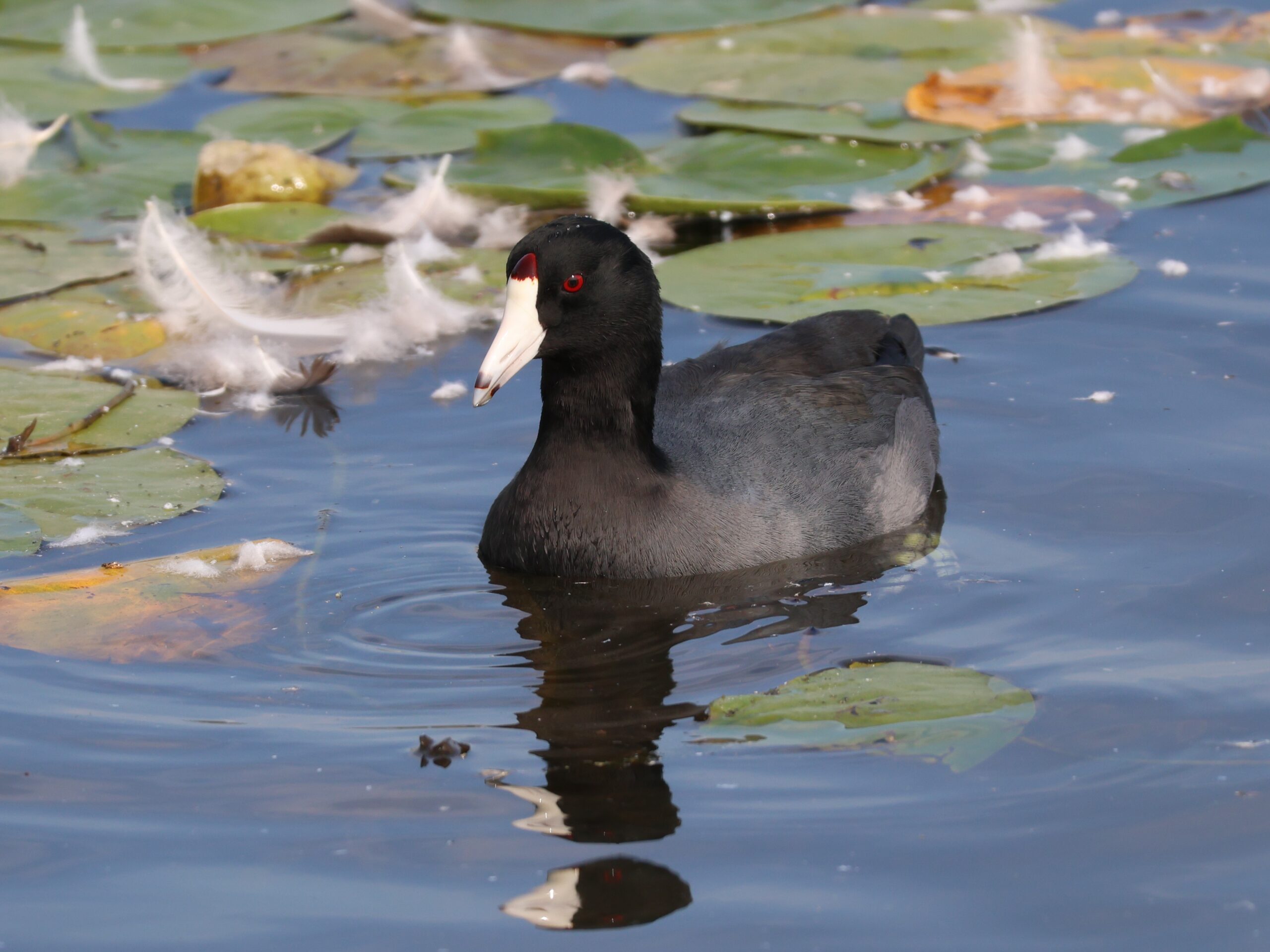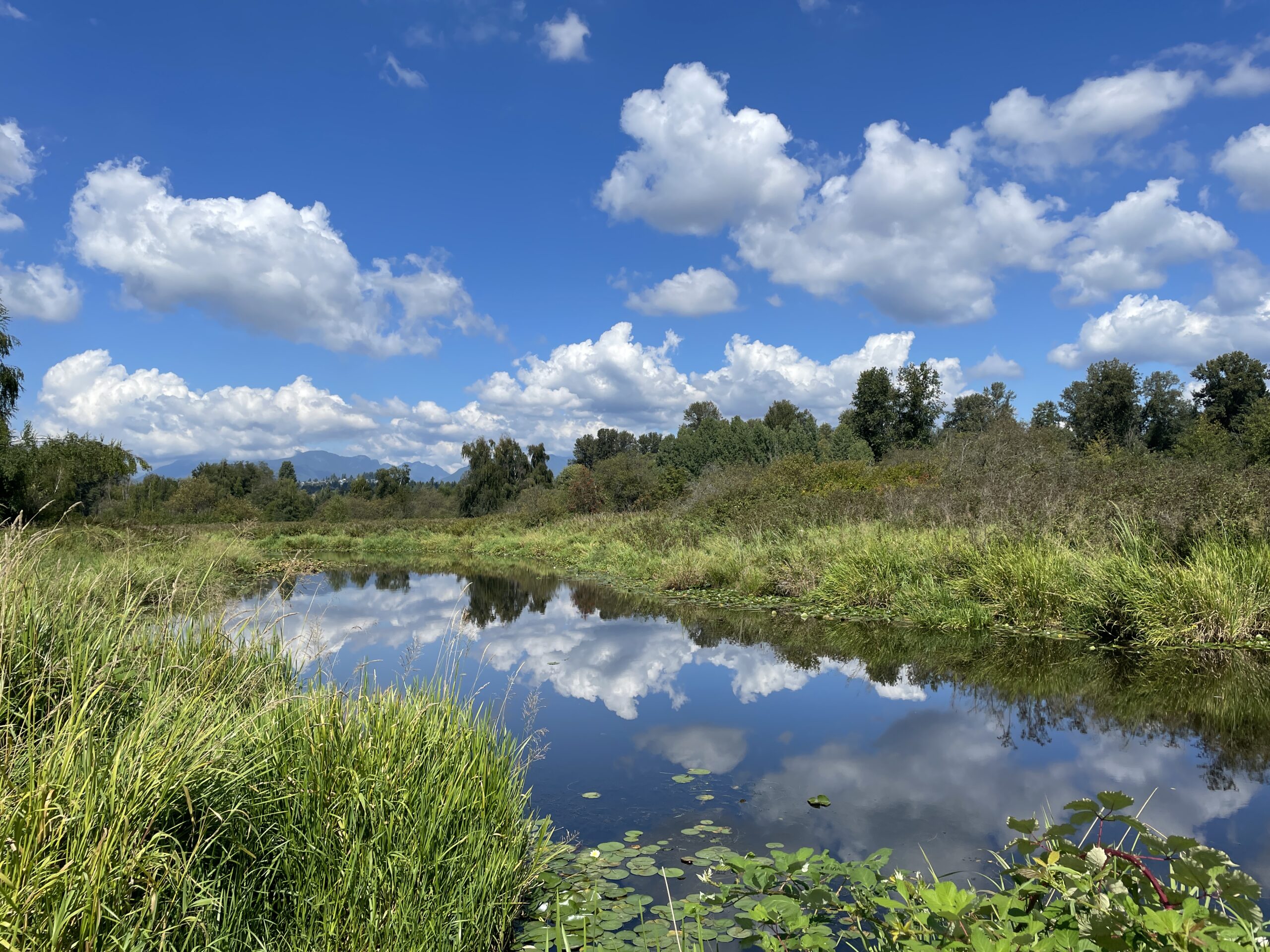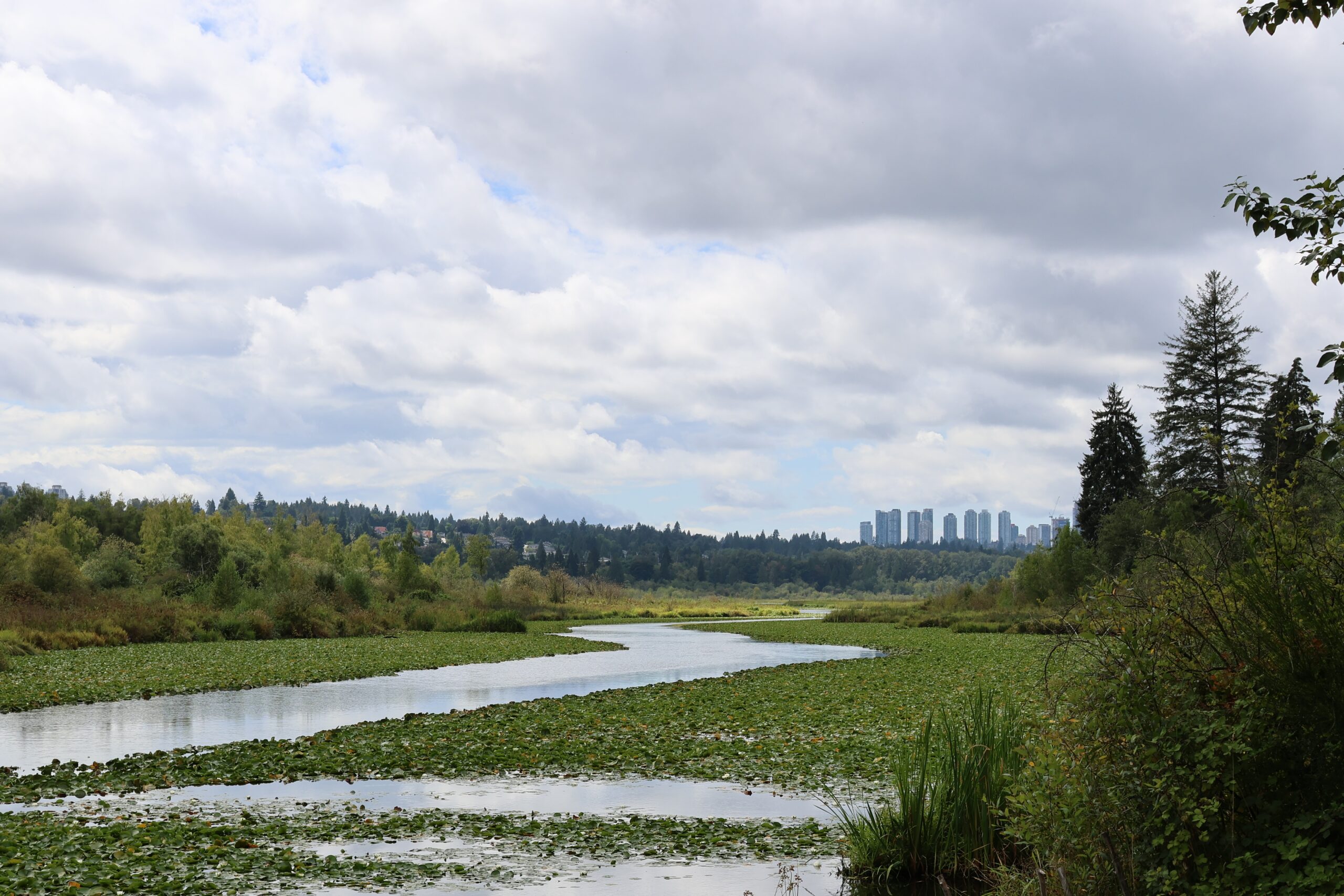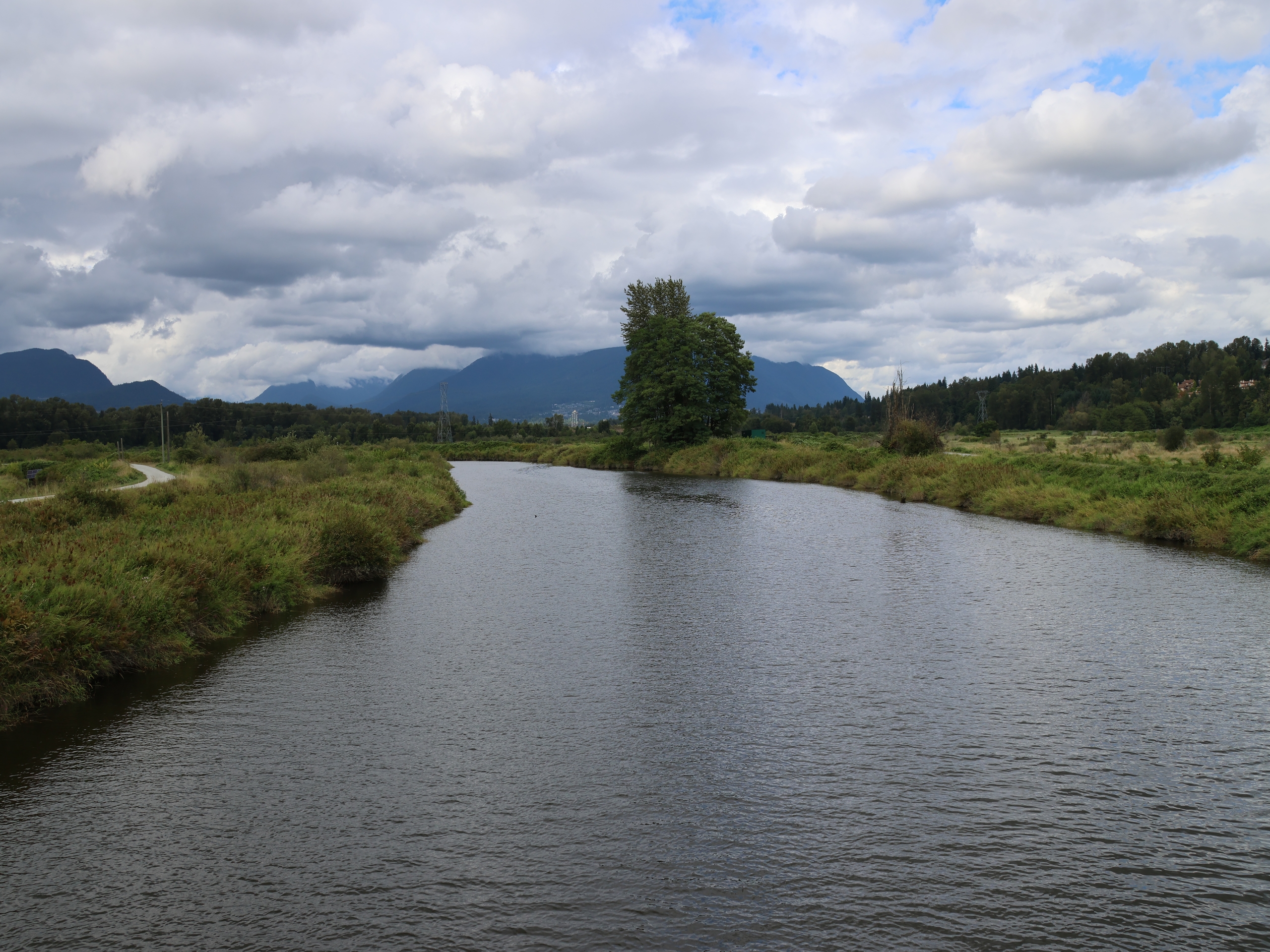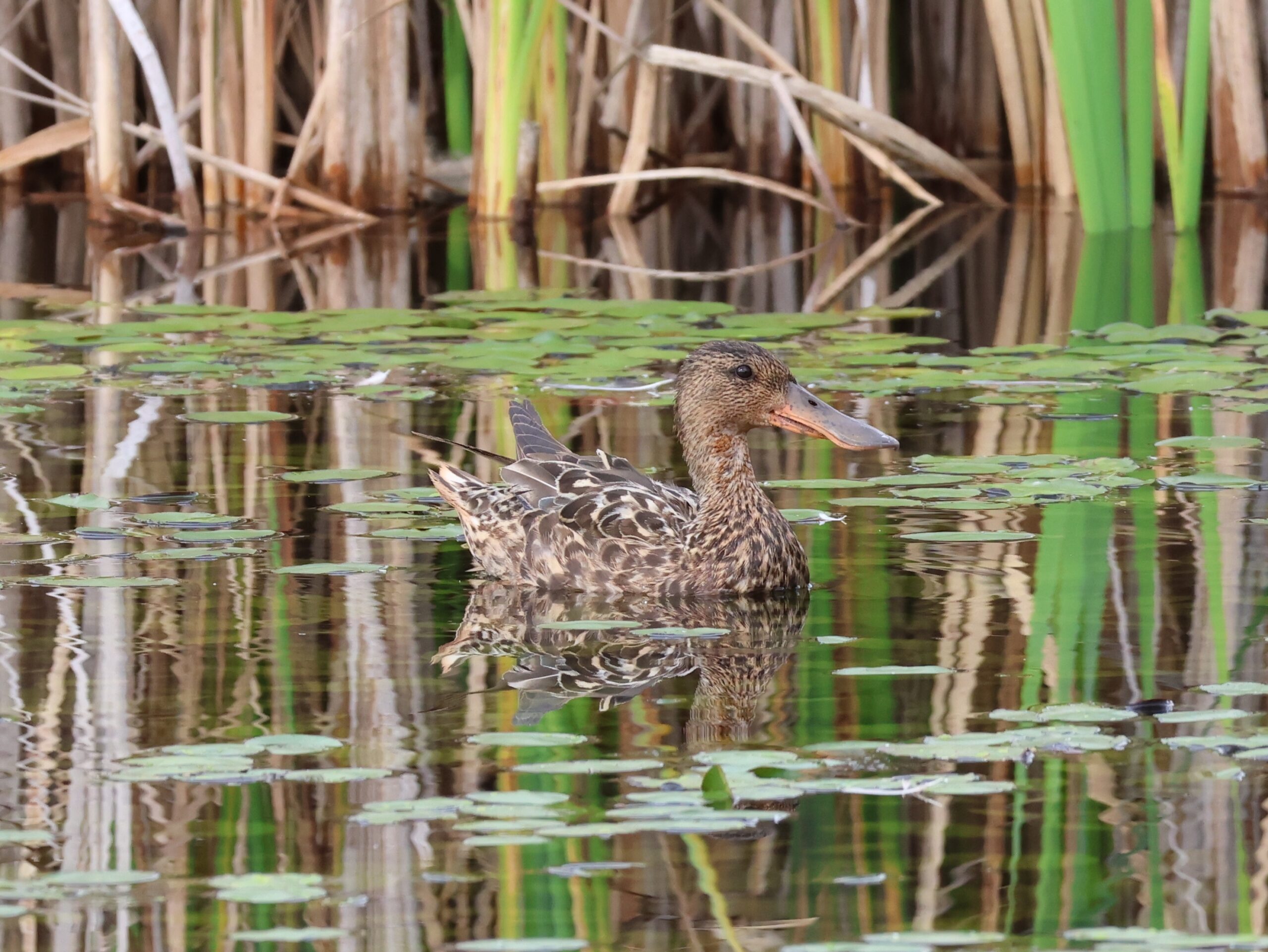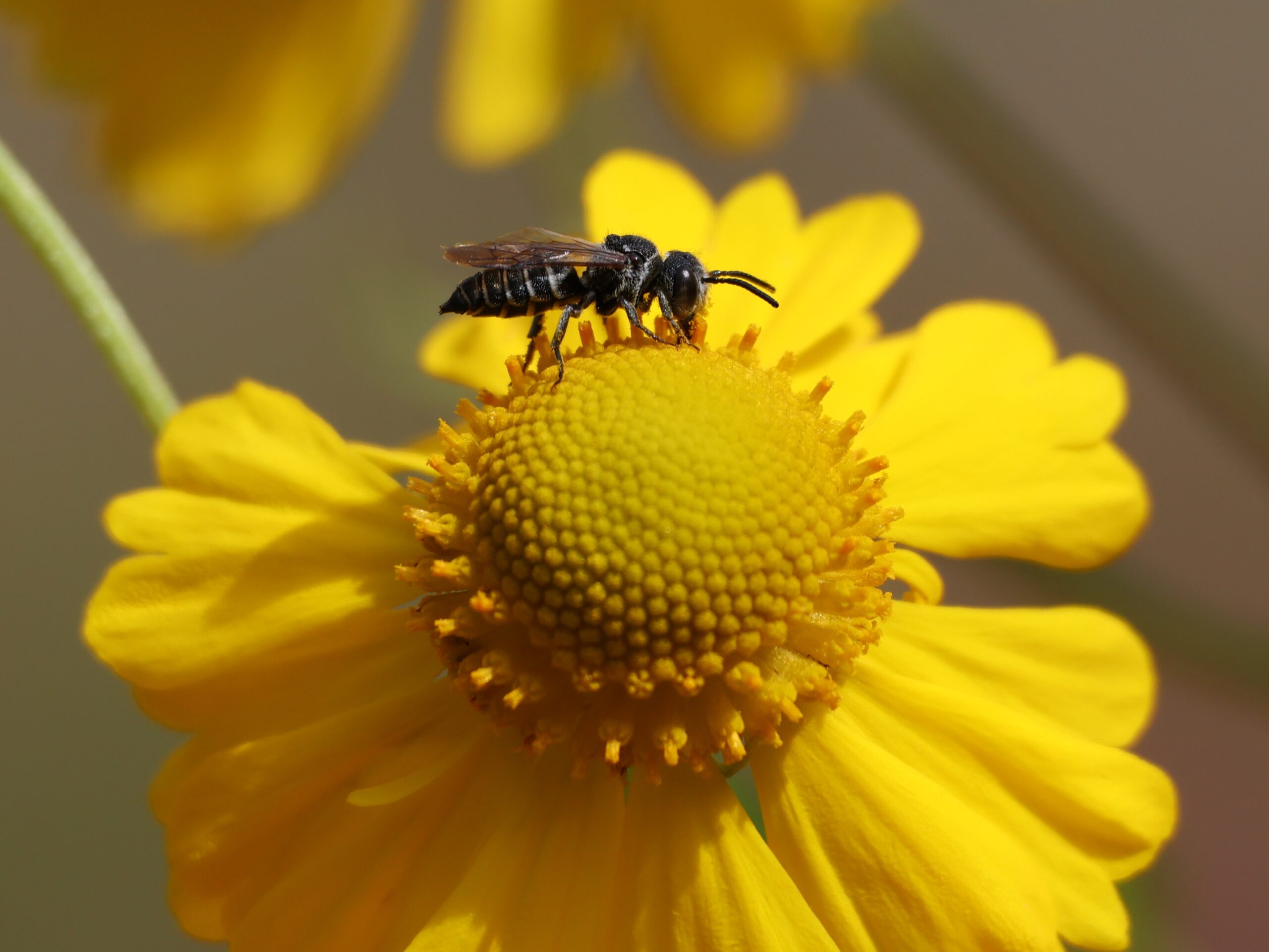Where: Piper Spit, Burnaby Lake (Burnaby), Tlahutum Regional Park (Coquitlam)
Weather: Sun, cloud, late showers, 9°C
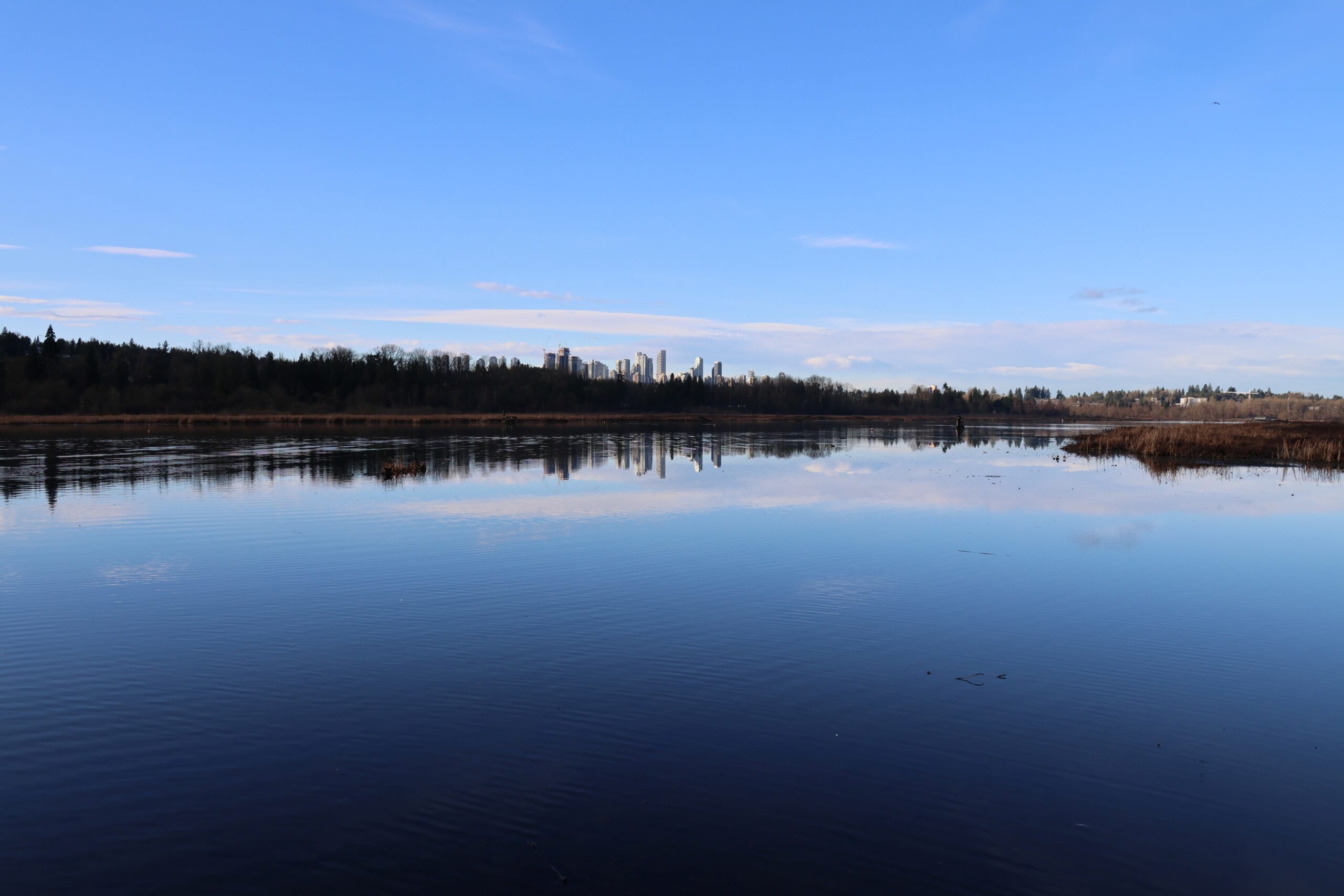
The original forecast was The Rains and plenty of them, but a shift toward better weather in the morning prompted us to head out earlyish to a couple spots before the showers arrived.
It was also unseasonably mild, at least until the wind started picking up near the end.
Piper Spit, Burnaby Lake
It was sunny at Piper Spit and new signs were out, giving myriad reasons on why feeding wildlife is now permanently banned. It’s not just about keeping the bears away. Check out the chonky squirrel on the sign. I’ve seen that squirrel!
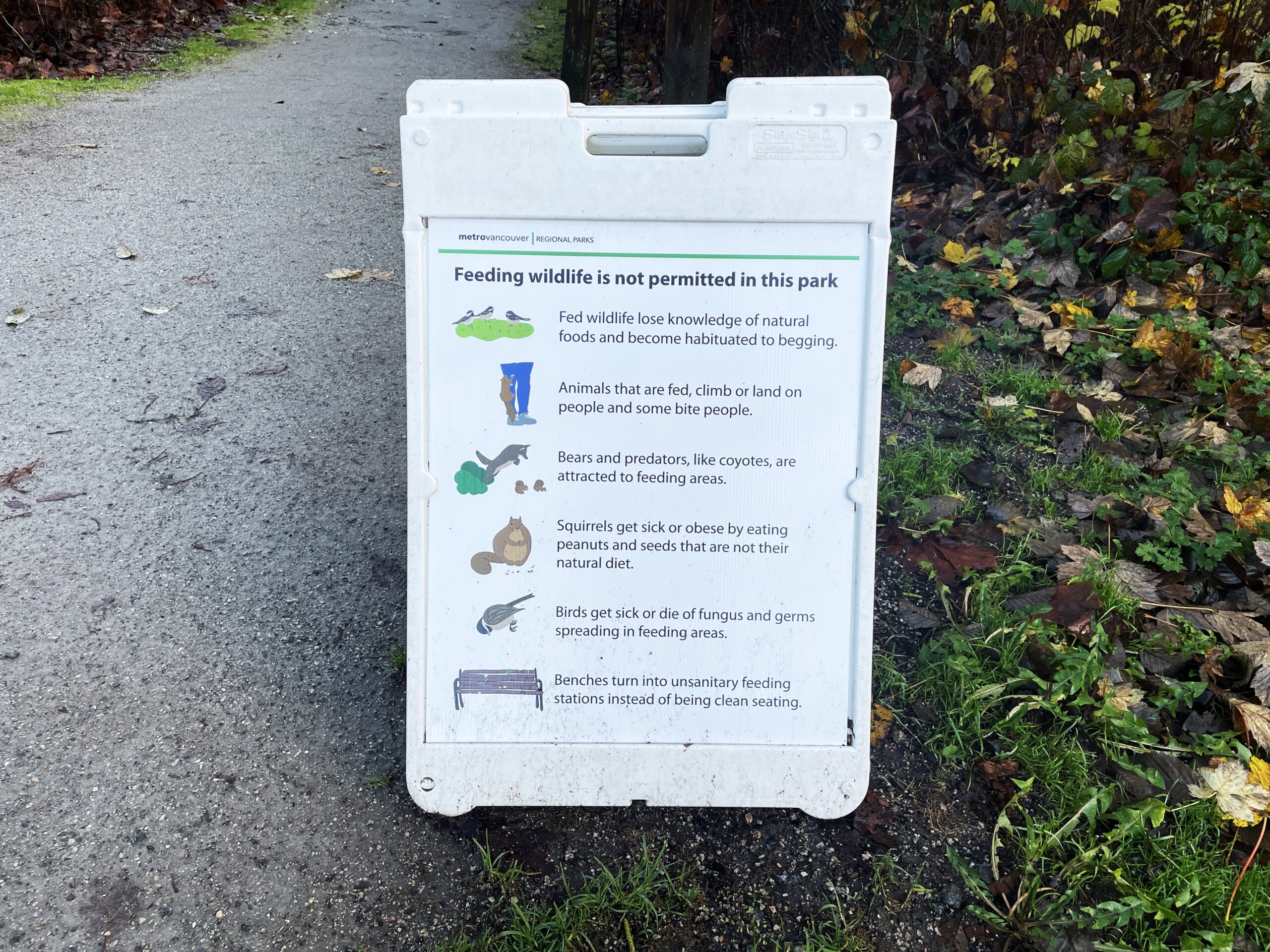
A good luck heron (I have arbitrarily decided that seeing a heron is good luck) was standing in the water, just down from the dam, but we both managed to get grainy, blurry photos, despite it not moving. Not an auspicious start.
Mist on the water provided some nice scenery shots along the trail, though, and a presumed mated pair of geese allowed me to take photos without any hissing.
We took the side trails and it appeared to be feeding time, as a collection of finches, robins, juncos, towhees and more were darting about the trees, snacking on berries. While it proved challenging at times to get shots through all the branches and twigs, I got probably my best directly-from-below shot of a robin ever. Possibly also my only one. We even saw a Stellar’s Jay, though it proved elusive for picture-taking.
At the spit, a few song sparrows were hopping about and the waterfowl were adapting to their new seed-free life (although we later saw someone had left a trail of seeds along a low railing–bad!) The water level seemed higher, which meant the shorebirds were farther away, so no good photo opportunities there. A few cormorants were in the cormorant hangout spot. Mostly, though, it was gulls and pigeons. The gulls were in two large groups, one on the land mass east of the spit and the rest in the shallows adjacent. Many of them were bathing as other birds dozed.
When we got there, the pigeons were lining the railing on either side leading to the end of the pier. The position of the sun meant we needed to walk past them to get the best shots. Would they freak out and fly off? Worse, a pair of guys were on the end of the pier and about to head back. But the pigeons were too cool for school (as the kids say) and remained in place, allowing copious shots of them puffed out, preening and posing.
In the water, the scaups were still here, along with the usual assortment of mallards, wood ducks, teals and others. A few shovellers are sticking around, too, it seems, though they werre snoozing, much like most of the others.
In all, it was a surprisingly good outcome to what had been originally forecast as a very wet morning.
Tlahutum Regional Park
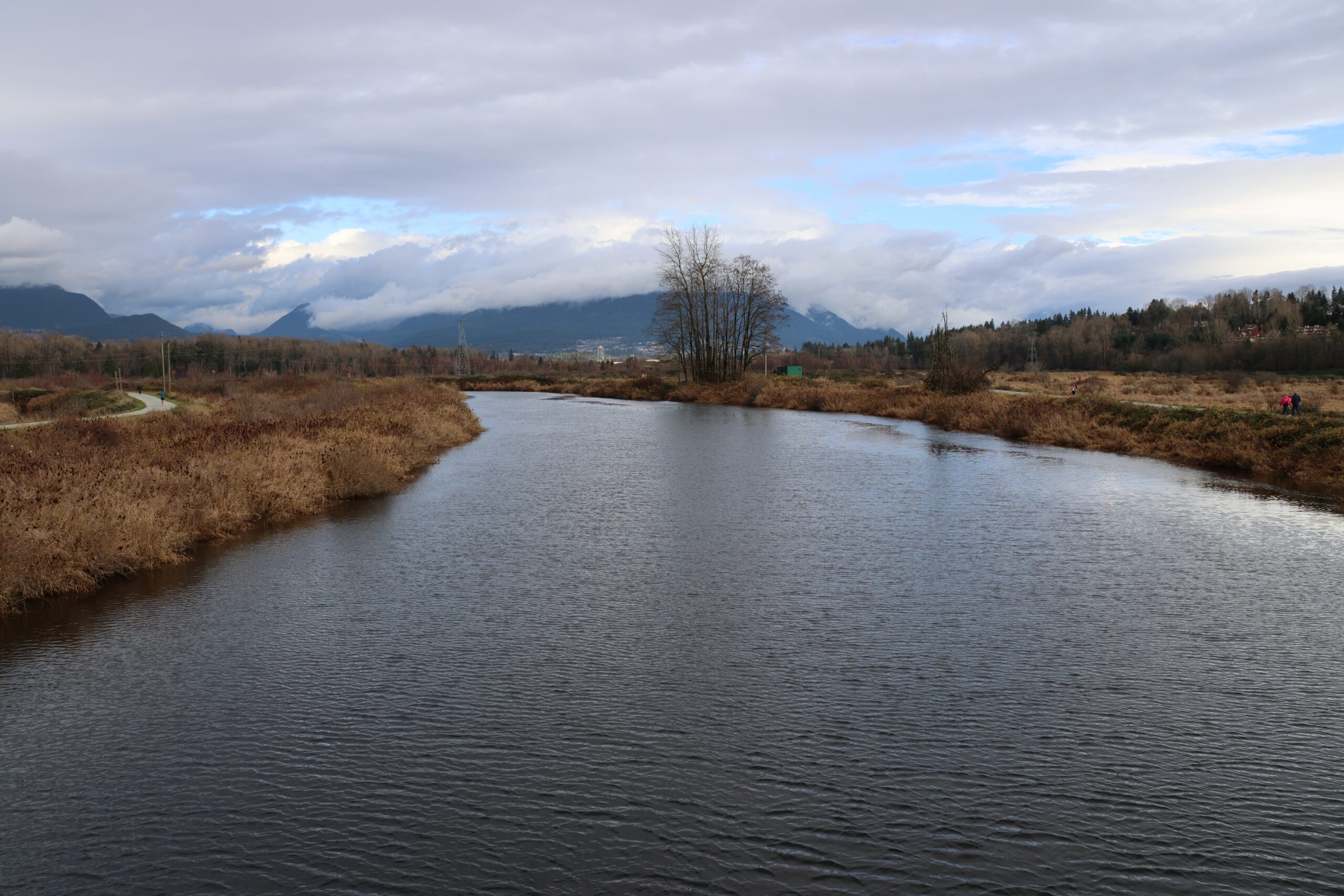
By the time we got to Tlahutum, the clouds had started gathering and the wind started picking up. A change in the weather was clearly on the way. Would we get some shots before getting soaked? Yes!
We saw Gadwalls and Common Mergansers in their usual spots (one of the creeks and the bend in the Coquitlam River before it approaches the bridge, respectively) and then I spotted something brown and furry in the water. Probably not a bird. It was a muskrat! It eventually climbed up on shore and began nibbling on vegetation that it held in its adorable little hands (though the claws looked very serious).
Meanwhile, the main pond saw an unusually large variety of waterfowl:
- Coots
- Mallards
- Northern Shovellers
- Hooded Mergansers
- Pied-billed Grebes
- Wood Ducks
- Buffleheads
- Ring-necked Ducks
- Possibly others I’ve forgotten
I’ve never seen so many different kinds of ducks here. It was clearly the hot place to be. And instead of just one grebe disappearing into a portal to the Grebe Universe before we could even take a photo, today there were multiple grebes, and we got photos as proof!
We opted to skip the community gardens, which is basically a series of mini-lakes right now, and will probably remain as such until spring. It did eventually start to shower, but only after we had packed away our gear and started heading out.
In all, an unusually bountiful outing, especially considering the original forecast.
The Shots
Shot with a Canon EOS R7 with 18-150 mm kit lens and 100-400 mm telephoto.
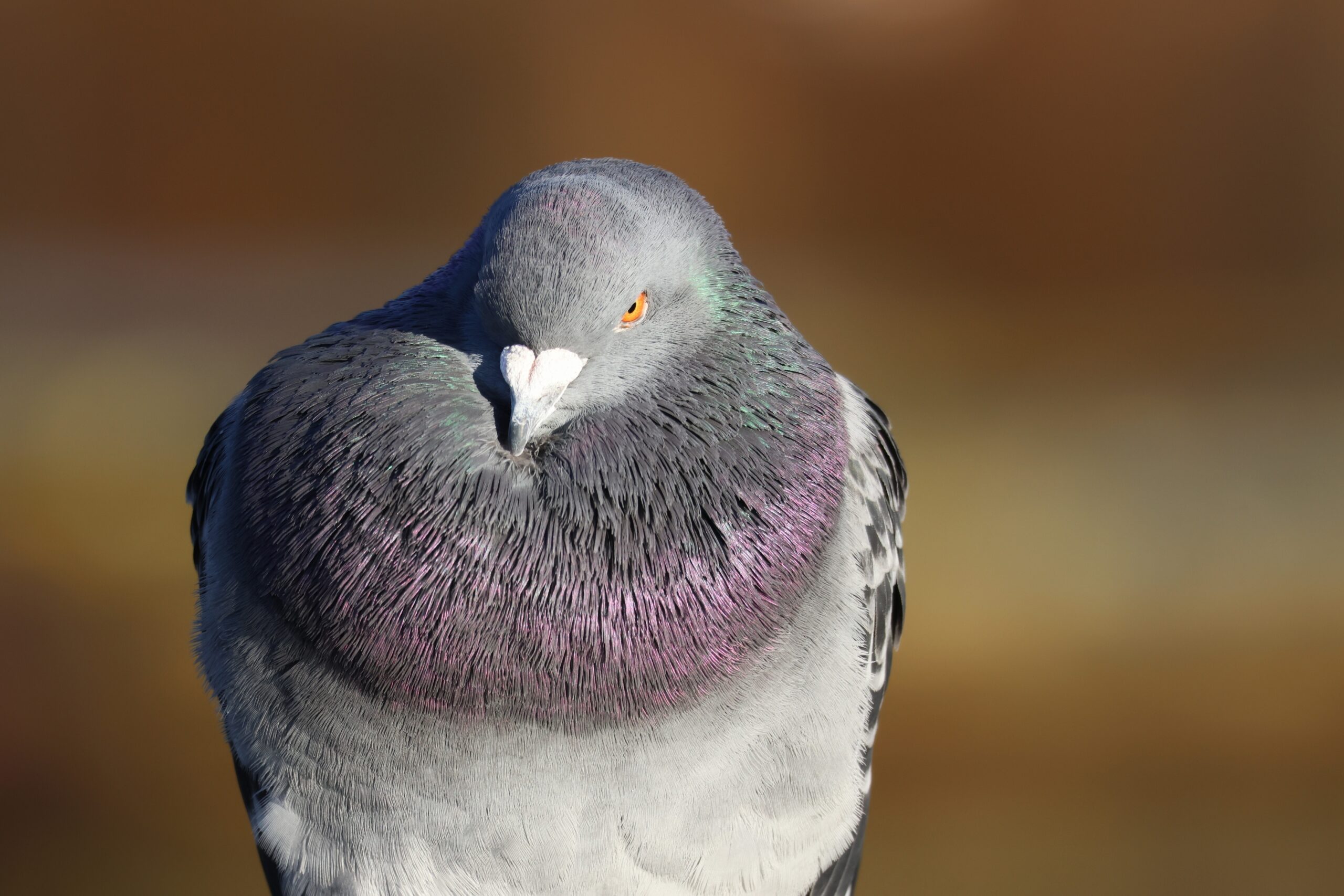
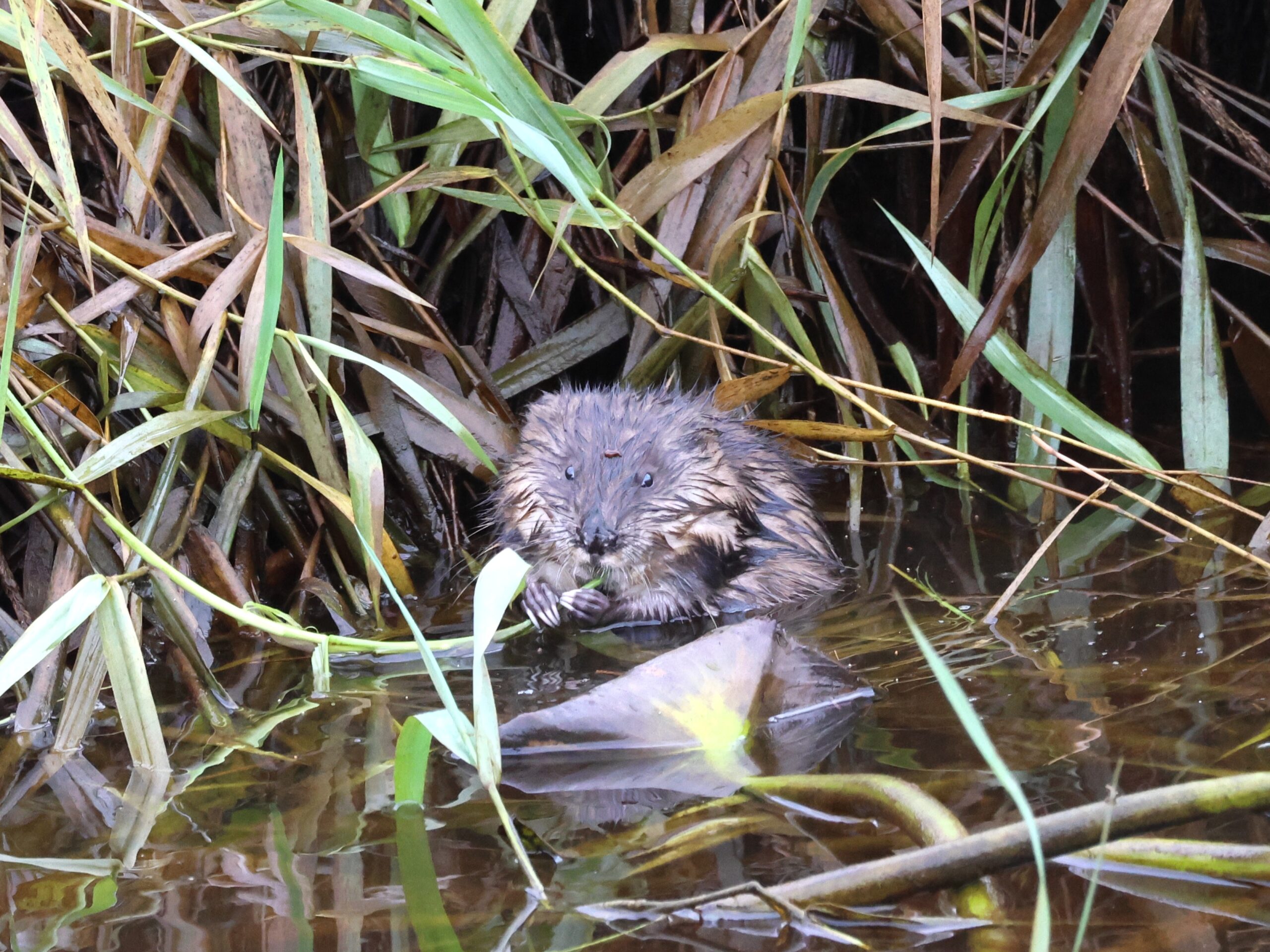
Gallery soon™.
The Birds (and other critters)
Sparrows and sparrow-adjacent:
- American Robin
- Black-capped Chickadee
- Dark-eyed Junco
- Fox Sparrow
- House Finch
- Red-winged Blackbird
- Song Sparrow
- Spotted Towhee
- Stellar’s Jay
Waterfowl and shorebirds:
- American Coot
- Bufflehead
- Canada Goose
- Common Merganser
- Double-crested Cormorant
- Gadwall
- Great Blue Heron
- Green-winged Teal
- Hooded Merganser
- Lesser Scaup
- Long-billed Dowitcher
- Mallard
- Northern Pintail
- Northern Shoveller
- Pied-billed Grebe
- Ring-necked Duck
- Wood Duck
Common:
- American Crow
- Assorted gulls
- Rock Pigeon
Raptors:
- Bald Eagle
Non-birds:
- Several ex-caterpillars
- A muskrat! (at Tlahutum)

